12024 (96)
Special
• 50th Anniversary of EFCLIN
Company Profile
• Larsen Equipment Design
Fitting Background
• State of the Art(ificial) Pt.2
• The importance of contact lens characterization Business & Marketing
• Chat GPT –a new language for the industry?
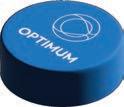


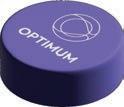


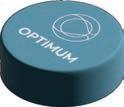

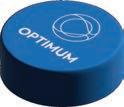




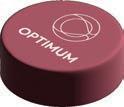


ISSN:1386 0194
Eyepress Fachmedien GmbH Saarner Str. 151 45479 Muelheim a. d. Ruhr Germany
Even more to love.
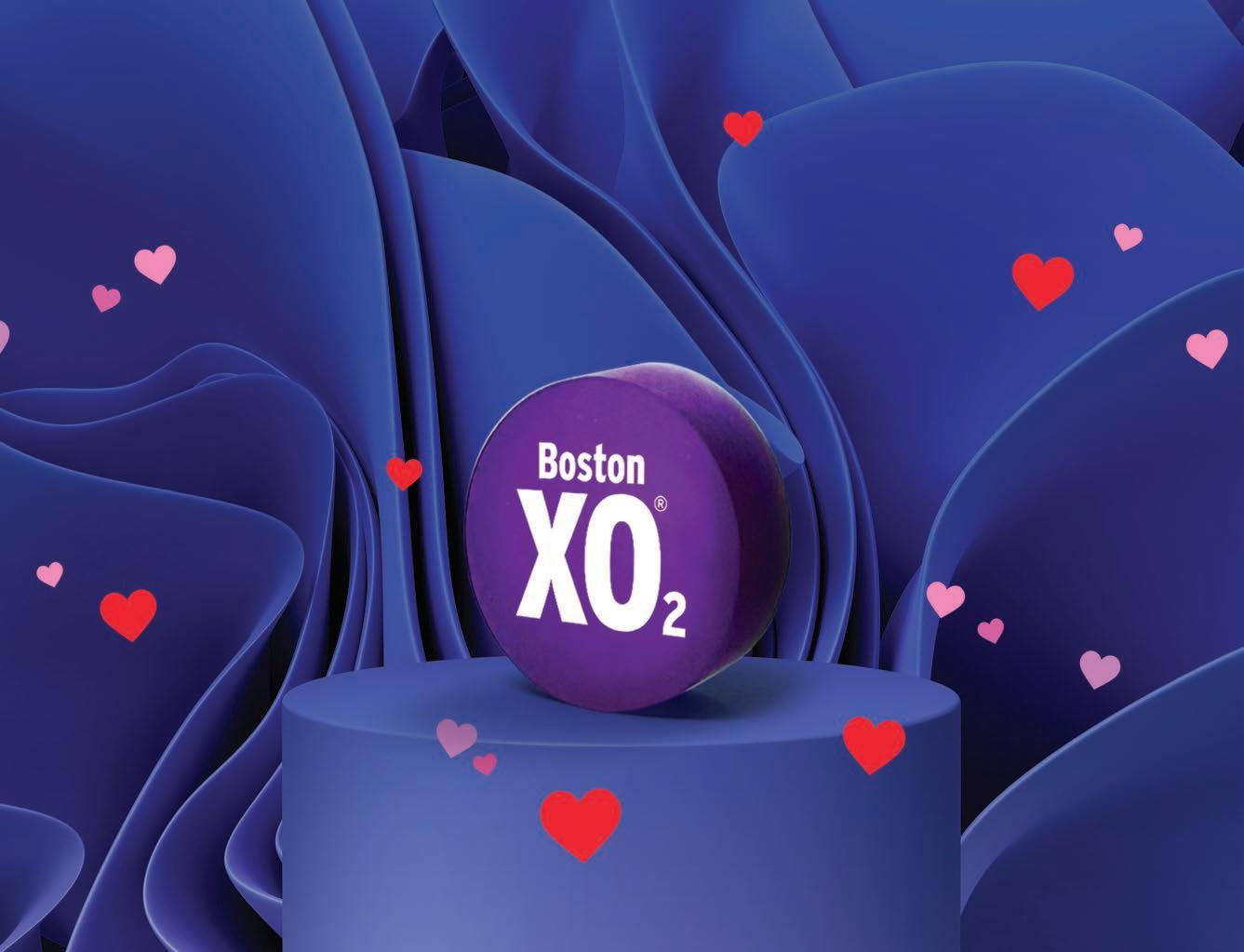
Boston XO2® is everything you love about Boston XO® lens material + hyper Dk.
At 141 Dk, Boston XO2® provides even higher oxygen delivery than Boston XO.® Having these two material choices available offers you:

More Flexibility
Accommodates lens designs for common vision conditions, as well as demanding visual needs such as keratoconus and ocular surface disease.

More Peace of Mind
Backed by the exceptional service and support you’d expect from a company that’s been around since 1853.

More Confidence
All our lens materials are precision manufactured by experienced technicians followed by rigorous quality control.
While it features even higher oxygen delivery than Boston XO®, Boston XO2® is still precision manufactured by experienced technicians and undergoes the same rigorous quality control— all backed by exceptional Bausch + Lomb service and support.
Visit www.fit-boston.eu or contact your authorized Boston® Lab.
Visit bostonlensmaterial.com or contact your authorized Boston Lab.
Visit bostonlensmaterials.com for important safety information.
Visit bostonlensmaterials.com for important safety information.
© 2023 Bausch & Lomb Incorporated or its affiliates. BL.XXXX.USA.23
© 2023 Bausch + Lomb.
This issue is somewhat more extensive than usual. The reason is the 50th anniversary of EFCLIN. Our magazine has been closely involved with the organization throughout our 32-year history. For the years 1992 to 2008, we have the complete archive of issues 1 to 50 as hardback editions, which Wim Albers kindly handed over to us. After that, we kept our own complete archive from issue 51 to 94. During my research, I came across a huge treasure of the history of contact lens manufacturing, which I could have dug into for days (or probably weeks). This alone could have filled an entire issue of GlobalCONTACT.
What was it like back then, when crossing borders between European countries was still hindered by border controls? And what was the best way to behave at these controls? The first column "Something Else" provided an amusing insight into this. Speaking of Europe: a useful conversion table for the European currency of the time, the ECU, was printed as a service, knowing full well that it was probably already outdated due to currency fluctuations when the magazine was delivered. That was just a small example, it's too easy to fall into the rabbit hole of historical research.
EFCLIN had a crisis of purpose in those early 90s – and as I read in the editorial by then EFCLIN President Tony Koller, not only was the entire contact lens industry undergoing dramatic changes at that time, but the circumstances in the emerging EU were also leading to significant adjustments.
A meeting in a fancy location was simply not enough. New life had to be breathed into the organization and, in addition to the very active support of its members and the association's
50 years of EFCLIN
membership of EUROMCONTACT, it was decided to develop a magazine that would act as a ‘glue’ for the industry. Information brochure, network, advertising – all this in every issue of CONTACT. It was very quickly accepted and after a few years distributed worldwide – GlobalCONTACT was born.
For this issue's report, we therefore let some of our companions have their say. First and foremost, Marion Beeler, who has been managing the association's fortunes as Executive Director since the beginning of Armin Duddek's presidency in 2015. Wim Albers has also accompanied the organization for almost 20 years as Executive Director and it is a special pleasure for us that he gives our readers an insight into this time.
It was particularly exciting to find out what happened in the association before the close monitoring of our magazine, i.e. before 1992. Andy Chryssolor, one of the founding members and a former president, can provide information about this and has done so wonderfully in our special.
Together with my colleagues from Eyepress Fachmedien, the publishing house of GlobalCONTACT, we congratulate the association and look forward to the next 50 years! ■



3
ONLINE VISIT OUR BRAND NEW WEBSITE WWW.GLOBAL-CL .COM SILKE SAGE Editor-In-Chief silke@global-cl.com LETTER FROM THE EDITOR GlobalCONTACT 1-24
50th EFCLIN CONGRESS EXHIBITION

25TH – 27TH APRIL 2024
VILAMOURA, PORTUGAL
The Algarve in Portugal is one of the most beautiful holiday destinations anywhere. The great infrastructure in Vilamoura makes this combination the perfect congress location.
The 50th EFCLIN Congress & Exhibition takes place there from 25th – 27th April 2024. For an engaging lecture program, EFCLIN forum and the best trade exhibition in the business, it can’t be beaten. It’s where the Contact Lens & IOL Industry from Europe, the Far East, North America and beyond come together… will you be there?
REGISTER NOW WHILE THERE IS STILL TIME AT www.efclin.com/congress or e-mail us on info@efclin.com
EUROPEAN FEDERATION OF THE CONTACT LENS AND IOL INDUSTRIES MORE INFORMATION WEB www.efclin.com MAIL info@efclin.com PHONE +41 41 372 10 10 FACEBOOK search: EFCLIN TWITTER @EFCLIN#efclincongress ADDRESS EFCLIN | Winkelbüel 2 | CH-6043 Adligenswil | Switzerland ENGAGING
EMPOWERING SUCCESS
MINDS
















Page 7: Acuity Polymers, Inc. www.acuitypolymers.com
Page 9: DIATEC Diamanttechnik GmbH, www.diatec-pforzheim.de
Page 11: LAMBDA-X S.A., www.lambda-x.com
Page 13: K & Y Diamond Ltd, www.kydiamond.ca Special 50 YEARS EFCLIN : Page 17: Contamac, www.contamac.com
Page 19: Bausch + Lomb Inc., www.bausch.com
Page 21: Acuity Polymers, Inc, www.acuitypolymers.com
Page 23: Efclin, www.efclin.com
Page 25: Larsen Equipment Design Inc., www.larsenequipment.com
Systems Ltd., www.optimecsystems.com
Page 41: SCHNEIDER GmbH & Co. KG, www.schneider-om.com
Page
12024 (96) Special • 50th Anniversary of EFCLIN Company Profile Larsen Equipment Design Fitting Background State of the Art(ificial) Pt.2 The importance of contact lens characterization Business & Marketing Chat GPT –a new language for the industry? Eyepress Fachmedien GmbH Saarner Str. 151 45479 Muelheim a. d. Ruhr Germany 01_Titel.indd 1
TO ADVERTISERS
Contamac, www.contamac.com Inside front cover: Bausch + Lomb Inc., www.bausch.com
INDEX
Title:
Page 4: Efclin, www.efclin.com
37:
Page 27: OPTOCRAFT GmbH, www.optocraft.com Page 35: Misupco, Inc., www.customcraftlens.com Page
Optimec
43:
SAS,
45: AMETEK Precitech, Inc., www.precitech.com Page 47: REM Vision Technologies SL, www.remvt.com Outside back cover: DAC International, Inc., www.dac-intl.com LETTER FROM THE EDITOR 3 50 years of EFCLIN Silke Sage INTERNATIONAL NEWS 6 A ll about you 9 A ll about products 10 A ll about research SPECIAL TOPIC 14 50 th anniversary of EFCLIN Andy Chryssolor, Marion Beeler-Kaupke, Erik Smidt, Silke Sage 22 Something else: looking back Wim Aalbers REPORT 28 C ompany profile: Larsen Equipment Design Silke Sage FITTING BACKGROUND 32 State of the art(ificial) – part 2 Eef van der Worp and Bart van der Linden 38 The importance of contact lens characterization Daniele Costa, Mariafrancesca Cascione, Valeria De Matteis, Maurizio Martino and Giancarlo Montani. 42 I nnovative contact lens cleaning Cornelius Doniga MANUFACTURING 44 C omparing bladder polishing systems with traditional polishing systems Erik Larsen HISTORY 32 The therapeutic contact lens Hans-Walter Roth BUSINESS + MARKETING 48 Chat GPT and other KI ‒ a new language for the industry Interview with Philipp Schmid MAGAZINE 52 Yellow Pages 54 Closing words: Steve Cleverly CONTENT 5 GlobalCONTACT 1-24
V-Optics
www.v-optics.fr/en Page
All about you
Tohoku University, The University of Tokyo, and Menicon start joint research
Tohoku University, The University of Tokyo, and Menicon will start joint research on fundamental technology for contact lenses in April. A statement of the research partners says that the aim of bringing together the research expertise of Tohoku University and University of Tokyo and the contact lens technology of Menicon, is to establish a fundamental technology to transform the industry with respect to the design of new contact lens materials and recycling of various plastic materials used for manufacturing and distribution of the contact lens materials. Tohoku University established the Research Center for Green X-Tech in January 2023 as part of the Green Goals Initiative, aiming to create an industry–academia co-creation and innovation hub that can solve social issues and business challenges related to the field of green technology through practical research using combinations of advanced technologies, including science, engineering, data science, and IT.
Similarly, University of Tokyo established the Institute for Solid State Physics and the Synchrotron Radiation Collaborative Research Organization in NanoTerasu to promote research for the establishment of a recycling-oriented theory that helps academia lead industry–academia collaborative creation and accelerates academic fusion.
Menicon has been working on the elucidation of structure–function relationship of contact lens materials by utilizing quantum beam sources at various facilities, including X-ray

sources at SPring-8 and the Aichi Synchrotron Radiation Center and neutron sources at the Japan Proton Accelerator Research Complex, with the ambition of leveraging the results to achieve new material design.
This April, Menicon and Tohoku University will establish the Menicon × Tohoku University Co-creation Research Center for Miru Mirai on the Aobayama Campus of Tohoku University. Additionally, the Institute for Solid State Physics and the Synchrotron Radiation Collaborative Research Organization of University of Tokyo will commence operations in April 2024. The joint research on fundamental technology for contact lenses will use NanoTerasu and the Co-creation Research Center as research hubs.
CooperVision enhances North American academic programs
CooperVision has introduced several enhancements to provide additional educational opportunities to U.S. and Canadian optometry students and residents. These include the integration of specialty contact lens initiatives, the rebranding of its student-focused philanthropic program, and a new in-person educational summit for members of the CooperVision Student Leadership Societies.
The company's Give Brightly program offers optometry students with additional fitting experience while enabling them to gift a one-year supply of contact lenses to patients in need. While the company previously offered a separate and similar initiative for its specialty lenses, the program now includes CooperVision’s diverse portfolio of soft and specialty contact lenses. Through the program, each student may select one patient per academic year to fit with complimentary
CooperVision contact lenses, then provide the appropriate follow-up care.
Members of the company’s student leadership societies will also have access to a new benefit this year. These students, who represent schools and colleges of optometry across the U.S. and Canada, will attend an educational meeting with networking opportunities at the company’s facilities. The three-day summit includes tours of two of the company’s global, Rochester-based manufacturing and distribution sites, as well as a variety of educational sessions.
Student leadership society members are second- or third-year optometry students selected by faculty at their schools to serve a one-year term. Selected students receive several other opportunities throughout the year, including a grant to attend the American Academy of Optometry annual meeting.
CooperVision’s academic programs also include the Best Practices Student Program, complimentary contact lenses for students, and myopia management certifications.
6
From left: Hideo Ohno, President Tohoku University, Teruo Fujii, President The University of Tokyo and Koji Kawaura, President and COO Menicon.
GlobalCONTACT 1-24 INTERNATIONAL NEWS

Bausch + Lomb Announces Appointment of Karen L. Ling to Board of Directors
Bausch + Lomb has announced that Karen L. Ling has been appointed to its board of directors effective immediately. Current director Richard De Schutter will retire from the board effective as of the company’s 2024 annual meeting of shareholders. With Ms. Ling’s appointment, the board has been temporarily expanded to eleven members and is expected to revert to ten directors following the annual meeting.

“Since my return to the company, Richard has been a trusted advisor,” said Brent Saunders, chairman and CEO, Bausch + Lomb. “I join the rest of the Board in thanking him for his service and wishing him well as he pursues his many other interests.” Saunders continued, “With her extensive industry leadership experience and time as a public company director, Karen brings significant human capital management, corporate governance, and
Johnson & Johnson Medtech launches new presbyopia-correcting IOL in EMEA
Johnson & Johnson MedTech has announced that its new presbyopia-correcting IOL Tecnis PureSee is now available in EMEA. The company describes it as featuring a proprietary, purely refractive design that delivers uninterrupted, highquality, vision with high best-in-category contrast and low-light performance, comparable to a monofocal IOL.
“Cataract surgery is the number one surgery performed globally, with 28 million procedures each year. But only 10-15% of patients are getting advanced optical IOLs specifically designed
Menicon acquires new site in Hokuriku area
Menicon has acquired a site in Fukui City, Fukui Prefecture, in the Hokuriku Area, Japan, for the manufacturing and production of contact lenses and lens care products. The company is also considering the establishment of research and development functions related to production at the new site for the purpose of bridging between development and production. The area of the new Fukui base is about 93,000 square meters, which will be the largest domestic production site of Menicon. The company’s supply chain is concentrated in the Chukyo area and by including Fukui Prefecture, it aims to establish a strong production economy zone that includes both areas and establish a rapid production structure according to demand.
shareholder engagement expertise to the organization. We’re confident her perspectives will be highly additive in the boardroom as Bausch + Lomb continues its evolution.” Ling stated, “I have long admired Bausch + Lomb’s reputation in eye health and am excited to join such a dynamic and innovative organization as it executes an ambitious global growth strategy. I look forward to helping the company deliver value for all stakeholders in 2024 and beyond.”
Karen L. Ling is the former executive vice president and chief human resources officer at American International Group, Inc. and, prior to that, at Allergan. She previously held senior human resources roles at Merck and Wyeth. Ling is currently a director – and chair of the compensation and human capital management committee – of iRythym Technologies and has served on the boards of Mallinckrodt Plc and TherapeuticsMD Inc. She also serves as a member of the advisory committee of Galderma. Additionally, Ling is a member of the board of two nonprofits: ExpandEd Schools and the JED Foundation. She holds a B.A. in economics from Yale University and a J.D. from the Boston University School of Law.
for astigmatism and presbyopia,” said Jacqueline Henderson, President Vision, EMEA, Johnson & Johnson. “Today, we’re proud to launch the Tecnis PureSee IOL, giving surgeons and patients the choice of a premium IOL that combines clarity of vision and reduced visual symptoms.”
Today, when choosing an IOL, surgeons and patients must make trade-off decisions. For example, you can have a lens that offers clear sight at all distances without spectacles, but at the price of possible glares and halos. According to the company, their new IOL combats these issues and improves the overall outcomes for both patients and surgeons.

8
GlobalCONTACT 1-24 INTERNATIONAL NEWS
Karen L. Ling
All about products
OPTIMEC SYSTEMS MAP TRAY+ — transform your quality control
Metrology is essential to quality control in your production process but can often be a bottleneck. The Optimec Systems MAP TRAY+ offers a solution, utilising advanced OCT technology to provide measurement at every stage of production, whilst lenses are blocked. Base curve and thickness after the first cut; front and base curve, CT and sag after the second cut, all completed whilst on-arbour and in a lathe autoloader tray. Automation on its own is not enough – you also need integration, which is where the MAP also shines, with in built APIs to allow connectivity to production control software. The MAP could solve your production QC issues, contact us today for more information. www.optimecsystems.com/map – info@optimecsystems.com

Contamac: Proven Products, Leading Brands

Contamac’s website has been updated and designed to provide customers with an enhanced user experience. With a more user-friendly interface, enriched content, and improved navigation, it provides visitors with seamless access to the resources they need. Alongside the complete range of contact lens and intraocular lens materials, the website now includes Global Insight, Contamac's digital publication. Alongside the website launch, Contamac released a refreshed look to its familiar product logos. This transformation brings greater alignment to the Contamac brand, and to that of our industry partners. Visit www.contamac.com to see more.

DIATEC Diamanttechnik GmbH Gmuender Str. 6 D-75181 Pforzheim Phone +49 (0) 72 31 - 7 80 12 - 0 info@diatec-pforzheim.de www.diatec-pforzheim.de Diamond tools for highest demands for the production of Intraocular Lenses and Contact Lenses monocrystalline and polycrystalline diamond tools Diamond turning tools with controlled waviness Diamond milling tools Advertisement INTERNATIONAL NEWS
All about research
UV protective contact lenses, smart contact lenses, eye color & retinal health
A team of researchers at Khalifa University, Abu Dhabi, United Arab Emirates, has developed UV protective contact lenses. Researchers from Dresden, Germany, investigated how four Drosophila genes, known to control eye color, are essential for health of retinal tissue. Scientists from Nanyang Technological University, Singapore (NTU Singapore) have developed a flexible battery as thin as a human cornea, which stores electricity when it is immersed in saline solution, and which could one day power smart contact lenses. By Rebekka Nurkanovic
New contact lenses respond to UV and temperature changes
A team of researchers at Khalifa University, Abu Dhabi, United Arab Emirates, has developed UV protective contact lenses. Prof. Haider Butt and PhD student Ahmed Salih, both Department of Mechanical Engineering, developed their lenses using smart materials such as photochromic and thermochromic powders. They have unique optical attributes depending on their activated and inactivated states. Photochromic powders change their structure in response to UV, while thermochromic ones react to temperature variations. When integrated into lenses, they should be able to help protect the eyes. Under regular lighting, these transition contact lenses effectively block about 45% of UV and 20% of blue light. When exposed
to UV radiation, the lenses darken in real time, absorbing portions of visible light. The speed and intensity of this transition vary based on the specific photochromic material used.
The use of different thermochromic and photochromic powders allows for user-specific customization, allowing wearers to choose lenses based on their unique needs. For instance, blue transition lenses react swiftly, with 95% of their color change reverting in less than five seconds after exposure to UV light.
Pink lenses offer more intense coloration, but they take more than 30 seconds to return to transparency.
UV isn't the only factor impacting eye health. Fluctuations in ocular surface temperature, normally between 31 to 37° C, have been connected to issues like dry eye, glaucoma, and diabetic retinopathy. This has spurred interest in real-time temperature


10
GlobalCONTACT 1-24 INTERNATIONAL NEWS
monitoring using advanced contact lenses. The Khalifa University team’s lenses are temperature-sensitive and multifunctional, displaying optical changes within physiological conditions. They darken outdoors due to UV rays from sunlight and respond to changes in temperature.
The team’s multifunctional lenses showcase UV and blue light filtering capabilities alongside colorimetric temperature responses. The researchers think that the lenses stand poised to serve as both therapeutic and diagnostic tools. Their findings were published in the journal Light Science & Applications in 2023.

a: Chemical structure of photochromic and thermochromic powders (l.) spiropyran structured material (colorless) switching to merocyanine (colored) and (r.) Fluoran leuco dyes at protonated and deprotonated states. b: Schematic of the lenses’ fabrication process. c: Multifunctional contact lenses under different stimuli. Picture: A. Salih, and H. Butt
Eye color genes are critical for retinal health
Metabolic pathways consist of a series of biochemical reactions in cells that convert a starting component into other products. There is growing evidence that metabolic pathways coupled with external stress factors influence the health of cells and tissues. Many human diseases, including retinal or neurodegenerative diseases, are associated with imbalances in
metabolic pathways. Elisabeth Knust leads a team of researchers from the Max Planck Institute of Molecular Cell Biology and Genetics (MPI-CBG) in Dresden, Germany, who describe an essential role for one such metabolic pathway in maintaining retinal health under conditions of stress. They studied the classic Drosophila genes cinnabar, cardinal, white, and scarlet, originally characterized decades ago and named due to their



Precision & Gage R&R in the industry Operator independent
Best
World leader in wavefront metrology
for full characterization & report
www.ophthalmics.lambda-x.com Software
INTERNATIONAL NEWS

role in eye color pigmentation, in particular the formation of the brown pigment of the fly eye. These genes encode components of the kynurenine pathway, whose activity converts the amino acid tryptophan by various steps into other products. In this study, the authors have highlighted the function of this metabolic pathway in retinal health, independent of its role in pigment formation.
It is an evolutionary conserved metabolic pathway that regulates a variety of biological processes. Its disruption can result in the buildup of either toxic or protective biomolecules or metabolites, which can worsen or improve, respectively, the health of the brain, including the retina. Knowledge on this important metabolic pathway was recently extended by the research team, led by Elisabeth Knust, Director Emerita at the MPI-CBG, in their publication in the journal Plos Genetics. Being aware of the remarkable conservation of this metabolic pathway and the genes that regulate it, they used flies as a model system to unravel the role of individual metabolites in retinal health. The researchers looked at four genes – cinnabar, cardinal, white, and scarlet – named after abnormal eye colors following their loss in flies. “Since the Kynurenine pathway is conserved from flies to humans, we asked whether these genes regulate retinal
Battery charged by saline solution that could power smart contact lenses
Scientists from Nanyang Technological University, Singapore (NTU Singapore) have developed a flexible battery as thin as a human cornea, which stores electricity when it is immersed in saline solution, and which could one day power smart contact lenses. The NTU-developed battery is made of biocompatible materials and does not contain wires or toxic heavy metals, such as those in lithium-ion batteries or wireless charging systems. It has a glucosebased coating that reacts with the sodium and chloride ions in the saline solution surrounding it, while the water the battery contains serves as the ‘wire’ or ‘circuitry’ for electricity to be generated.
The battery could also be powered by human tears as they contain sodium and potassium ions, at a lower concentration. Testing the current battery with a simulated tear solution, the
health independent of their role in pigment formation,” says Sarita Hebbar, one of the lead authors of the study.
To find this out, the scientists used a combination of genetics, dietary changes, and biochemical analysis of metabolites to study different mutations of the fruit fly, Drosophila melanogaster. Sofia Traikov, a co-author, developed a method for the biochemical analysis of the metabolites of the Kynurenine pathway. This allowed the researchers to link different metabolite levels to the health state of the retina. They found that one metabolite, 3-hydroxykynurenine (3OH-K), is damaging to the retina. More importantly, they could show that the degree of degeneration is influenced by the balance between toxic 3OH-K and protective metabolites, such as Kynurenic Acid (KYNA), and not just by their absolute amounts. Sarita continues: “We also fed two of these metabolites to normal (non-mutant) flies and found that 3OH-K enhanced stress-induced retinal damage, whereas KYNA protected the retina from stress-related damage.” This means that retinal health in certain conditions can be improved by altering the ratio of metabolites of the Kynurenine pathway.
DOI: https://doi.org/10.1371/journal.pgen.1010644
Source: Max Planck Institute of Molecular Cell Biology and Genetics (MPI-CBG)
researchers showed that the battery’s life would be extended an additional hour for every twelve-hour wearing cycle it is used. The battery can also be charged conventionally by an external power supply.
Associate Professor Lee Seok Woo, from NTU’s School of Electrical and Electronic Engineering (EEE), who led the study, said: “This research began with a simple question: could contact lens batteries be recharged with our tears? There were similar examples for self-charging batteries, such as those for wearable technology that are powered by human perspiration. However, previous techniques for lens batteries were not perfect as one side of the battery electrode was charged and the other was not. Our approach can charge both electrodes of a battery through a unique combination of enzymatic reaction and self-reduction reaction. Besides the charging mechanism, it relies on just glucose

12
Photos of fly eyes with different colors ranging from normal (left, red) to abnormal (bright red, middle, mutation in the cinnabar gene), and white, right (mutation in the white gene). Abnormal eye color arises due to mutations in genes that regulate pigment formation and a specific metabolic pathway. Credit: Hebbar et al., Plos Genetics, 2023 / MPI-CBG
GlobalCONTACT 1-24 INTERNATIONAL NEWS
and water to generate electricity, both of which are safe to humans and would be less harmful to the environment when disposed, compared to conventional batteries.”
The team demonstrated their invention using a simulated human eye. The battery, which is about 0.5 millimeters-thin generates electrical power by reacting with the basal tears – the constant tears that create a thin film over our eyeballs – for the devices embedded within the lenses to function.
The flexible and flat battery discharges electricity through a process called reduction when its glucose oxidase coating reacts with the sodium and chloride ions in the tears, generating power and current within the contact lenses. The team demonstrated that the battery could produce a current of 45 microamperes and a maximum power of 201 microwatts, which would be sufficient to power a smart contact lens. Laboratory tests showed that the battery could be charged and discharged up to 200 times. Typical lithium-ion batteries have a lifespan of 300 to 500 charging cycles. The team recommends that the battery should be placed for at least eight hours in a suitable solution that contains a high quantity of glucose, sodium and potassium ions, to be charged while the user is asleep. The NTU team will be conducting further research to improve the amount of electrical current their battery can discharge.

They will also be working with several contact lenses companies to implement their technology.
The findings were published in the scientific journal Nano Energy in June 2023. The research team has filed for a patent through NTUitive, NTU’s innovation and enterprise company. They are also working towards commercializing their invention.
DOI: 10.1016/j.nanoen.2023.108344
Source: Nanyang Technological University



Advertisement
Optoform
Nanotech UPL
Nanoform REM Vision
www. ky diamond.ca
Associate Professor Lee Seok Woo, from NTU’s School of Electrical and Electronic Engineering (EEE) holding up the flexible battery that is as thin as a human cornea. Picture: NTU Singapore
Ultra Precision Diamond Tools DAC
Moore
Precitech
CONTACT LENS AND IOL
INTERNATIONAL NEWS
50 Years of EFCLIN
The organization we all love so much is turning 50. It's a matter of honour for us at GlobalCONTACT, which has been supporting the organization for 31 years, to bring you a big special. We asked some of EFCLIN's companions: what was it like back then? What were their personal memories and, above all, what were the congresses like? Wim Aalbers wrote an amusing version of his long-running column "Something else". But now, ladies and gentlemen, let's take a look back together. By Silke Sage

• Vilamoura
• Glasgow Brussels • Nice
Den Haag •
• Amsterdam
• Antwerp
• Berlin
• Prague Venice •
• Vienna
• Budapest
• Dubrovnik
• Riga
• Barcelona Sitges • Valencia •
• Malaga

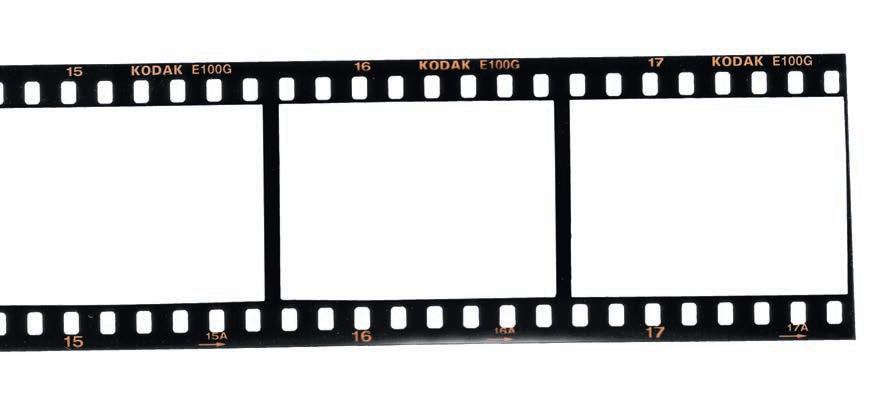


GlobalCONTACT 1-24
•
EFCLIN Congresses & Exhibitions have been organized in these locations over the past 50 years. In some places several times.
Andy Chryssolor: Founding Member and Past President of EFCLIN
GlobalCONTACT: When did you join the contact lens industry?
Andy Chryssolor: February 1969 when I joined Allergan in California as Area Manager Europe, Middle East & Asia. At that time, Allergan was producing Ophthalmic Rx and OTC products and contact lens solutions which they sold under their label and also for B&L. I travelled internationally and began visiting contact lens laboratories and looked for distributors in those countries as Allergan was a very young company and was looking to enter the international market.
Many ophthalmic congresses had an exhibition and did not allow contact lens manufacturers to exhibit and if they did, the delegates would not bother to visit the exhibition or there were too few to make the exhibition worthwhile financially.

In January 1972 I was asked to relocate to Europe to set up European Headquarters, look for acquisitions, find distributors in European countries where Allergan was not represented. Headquarters were established in the UK. I was introduced to George Nissel at a Contact Lens meeting in London. He introduced me to other contact lens laboratories in the UK and also gave me a list of potential customers for the solutions in the rest of Europe to contact.
GlobalCONTACT: What organizations existed back then?
Andy Chryssolor: Each European country had at least one or two organizations that were only for the Profession such as Scandinavian Contact Lens Specialists, German Ophthalmologist Society, Chambre Syndicale des Adaptateurs d’Optique de Contact, Hungarian Ophthalmological Society. There was also the European Contact Lens Society of Ophthalmologists but were involved in fitting contact lenses only by Ophthalmologists. Opticians and Optometrists were not allowed to fit contact lenses during this period. Ophthalmologists insisted that this was a specialty and only they were qualified to fit. Many countries allowed Ophthalmologists to fit and give the prescription to the patient who would go to an optician to buy the lenses and return to the Ophthalmologist for the final fit.
GlobalCONTACT: How and why was EFCLIN founded?
Andy Chryssolor: Because the contact lens labs and equipment suppliers were not able to exhibit at many of these Ophthalmic congresses, George Nissel, after returning from a very poorly attended exhibition decided to speak with a few European colleagues and proposed setting up a trade association that would be strictly for the manufacturing trade where contact lens labs and suppliers could exchange ideas, review new products and see what products would be on offer. A big plus was that manufacturers would have the opportunity to exchange new ideas about manufacturing lenses. This was in 1971.
On March 18, 1972 EFCLIN was formally founded with Jack Gallimore as President and George Nissel as Secretary. The other founding members were: Javier Chamorro (Spain), Klaus Bjorn Bulle (Germany), Pierre Rocher (France), Rene Leroy (France), Roger Cotterau (France).
As time went on, the structure of the original idea for the creation of the Association was modified to hold lectures by the professions, allow solution manufacturers and any other industries that would be used in manufacturing. Workshops, commercial presentations during the exhibition were instituted, and IOL companies joined EFCLIN.
Today, EFCLIN is the premiere event for the contact lens and IOL industries world-wide with 32 countries represented and over 300 delegates at the 2023 Congress.
GlobalCONTACT: From when to when were you active in EFCLIN and in what function?
Andy Chryssolor: I became a Board member in 1975 and also 2004-2010, President in 2007, organizer of the golf tournament,
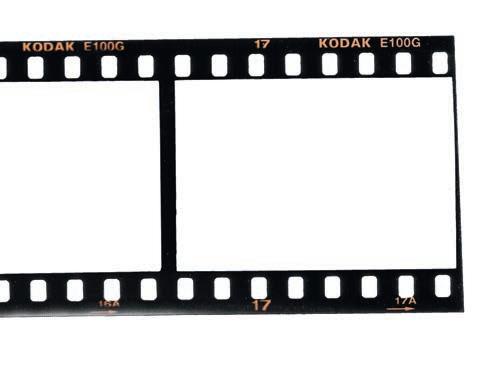



15 GlobalCONTACT 1-24

started “first of its kind” EFCLIN journal, “CONTACT” in 1981 (strictly for the trade and not for the Profession), as President and with the Board’s agreement, invited the IOL manufacturers to join EFCLIN in 2008 as they did not have a manufacturers’ association. Many IOL labs started as contact lens labs as the IOL industry uses many of the same manufacturing equipment such as lathes and analytic instruments. The development of computerized milling machines was a game changer in producing one-piece IOLs.
GlobalCONTACT: What novelty, innovation or achievement do you remember in this industry?
Andy Chryssolor: Manufacturing was greatly improved by the introduction of High spec CNC lates, moulding technology for soft lenses making disposable lenses affordable and readily available, measuring and analytical equipment to a very high standard.
GlobalCONTACT: Which was the best congress for you and why?
Andy Chryssolor: The last Congress, 2023 was a huge success! After Covid, this event was what the doctor ordered. Excellent speakers, good location, enthusiastic exhibitors, the idea of dressing in country traditional attire was very entertaining as was the cartoon drawings! Overall, it was very well organized and meeting colleagues after Covid was most enjoyable.
GlobalCONTACT: Which venue did you like best?
Andy Chryssolor: Venice in May, 2015 was a venue I shall never forget. Just being in Venice was magic. Although I have been to Venice at least 5 times, I never really saw it for what it is, as my
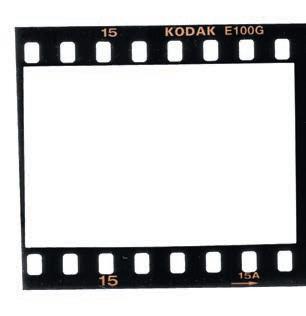
trips there were on business. This time, I went as a tourist and with the organized sightseeing it was more than beautiful. Not only the city, but the atmosphere at the Congress was relaxed and the delegates all seemed to be in very happy moods. The organization was also well prepared and speakers very interesting. The President’s dinner Saturday evening was most enjoyable with the good food and pleasant conversations. My pictures of Venice with the beauty of the city and those that I took of some delegates who were all enjoying themselves will live with me forever!
GlobalCONTACT: Was there moving moment for you that you would like to share with our readers?
Andy Chryssolor: Very early in EFCLIN’s life as in 1973, EFCLIN delegates came with their wives and the 15 or so delegates spent more time socializing than doing serious business all day long. We had our sessions in the mornings and then after lunch we went sightseeing. At this meeting we were in Spain and would hold our meeting at one of the Islands off the coast at Mallorca. We would travel there on an overnight boat in our own cabin. This would be an interesting experience as my wife and I never travelled and slept in a cabin on a boat.
We arrived at the port and were shown to our “boat” which was nothing more than a small ferry that travelled between the Mainland and Majorca. We were shown to our cabin – a very small space with a small bed and washroom. I turned to the crewman that showed us to the cabin and said to him: “This so small and the bed tiny. How do you expect me to make love to my wife in such as small bed?” (Joking, of course.) He replied, “Would you like me to show you how?”




EUROPEAN FEDERATION OF THE CONTACT LENS AND IOL INDUSTRIES SPECIAL TOPIC



Advertisement GlobalCONTACT 1-24 EUROPEAN FEDERATION OF THE CONTACT LENS AND IOL INDUSTRIES SPECIAL TOPIC
Marion Beeler- Kaupke, Executive Director
GlobalCONTACT: What novelty, innovation or achievement can you remember in connection with the contact lens industry in general and the EFCLIN Congress in particular?
Marion Beeler: Having worked in contact lens fitting since the early 1980s, I have witnessed all kinds of innovations. It started with CAB, the first "gas-permeable" material, continued with newer gas-permeable materials and aspheric geometries and ended with quadrant-specific lenses. Toric lenses – rigid and soft – as well as bifocal and multifocal lenses completed the range. Each development took the industry one step further. Then came special ortho-K lenses and finally sclerals, which brought us almost back to the beginning of contact lens history.
In the same way, as an optician's apprentice at the end of the 1970s, I was still making prescription glasses. Glasses with +20.0 dpt were not uncommon. Attempts with rigid contact lenses were often only somewhat successful, as these people were usually elderly and no longer at their best in terms of fine motor skills. The liberation came with IOLs.
I have been working with EFCLIN for 9 years now. During these years, something new has been launched at practically every congress. Another new aspect is the enormous development in the digital field.
GlobalCONTACT: What setback, scandal, or almost unsolvable problem can you remember during your time as EFCLIN Executive Director?
Marion Beeler: For example, the total collapse of the freight elevator in Prague in 2017 because the specified capacity did not correspond to reality. The technicians had to spend half the night repairing it and we were only able to set up the exhibition after a long delay. In the end, thanks to this night-time operation, everything went smoothly and we had a great EFCLIN conference there. And also when the German government imposed the coronavirus quarantine on March 8, 2020 with a bang and we had to cancel the EFCLIN conference in Berlin, which was planned for the second half of April. The Board and I were sitting in a strategy workshop and had to make a decision within a few hours. A fully prepared congress had to be re-developed, which took as much time as organizing the congress. Thanks to insurance, EFCLIN was not left with the costs. In one case, however, this unfortunately ended in a legal dispute.
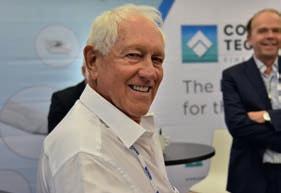

When Ukraine was invaded in February 2022, we had planned the EFCLIN Congress 2023 in Eastern Europe, in Budapest. Initially, everyone thought that this war would be short-lived, but unfortunately we were taught otherwise. After concerned EFCLN members contacted me in the summer of 2022, the Board and I decided to move the congress to Western Europe.
My PCO partner and I were faced with the great challenge of finding a suitable venue in the shortest possible time that was also available for the date we had already communicated. Fortunately, after dozens of inquiries, we found what we were looking for in The Hague.
GlobalCONTACT: Which was the best congress for you and why?
Marion Beeler: Every congress had its highlights and "pitfalls". "Best EFCLIN ever" is something I've often heard after a congress. This may be because I am a perfectionist myself and want to have everything organized before I leave for the congress. You can also see year after year how hard the exhibitors try to remain attractive and offer their customers something. The 2022 congress in Sitges was very emotional after the two-year Covid break. You could really feel how much everyone was looking forward to this reunion of the EFCLIN community.
GlobalCONTACT: Which venue did you like best?
Marion Beeler: First of all, I would like to say that the demands on an EFCLIN conference are extremely high. We need both a good exhibition infrastructure and suitable lecture rooms. I really liked Sitges as an organizer, all the other venues had a weak point somewhere. Unfortunately, sometimes these only came to light when we wanted to set up on site, sometimes we simply had to accept them and find a solution.
GlobalCONTACT: Was there a moving moment for you that you would like to share with our readers?
Marion Beeler: Yes, when Pam Larsen returned to work on the booth alongside her husband Erik in 2018 after a serious illness.. I don't think she missed a single congress apart from 2017.
I was also very happy when I found out that Helga Seiler and Ken Payne had said "I do" for life. We are not just an association but also an EFCLIN family.





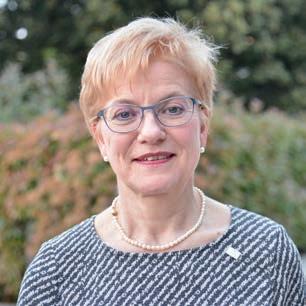
EUROPEAN FEDERATION OF THE CONTACT LENS AND IOL INDUSTRIES SPECIAL TOPIC GlobalCONTACT 1-24 18
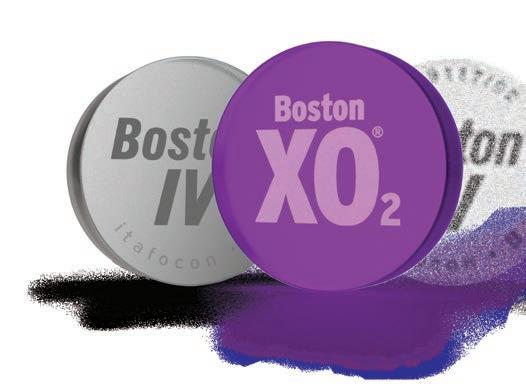
For 50+ years, Boston Materials has brought you innovative, high-quality products with unmatched service and support. Bausch + Lomb’s ongoing commitment to research has helped make us a world leader in GP material technology.
2000s 1980s
• Bausch + Lomb acquires Polymer Technology Corporation
• Boston® II and Boston® IV silicone acrylate materials introduced
• Boston® Equalens® introduced: first fluoro silicone acrylate GP lens material

• FDA approval for Boston® Orthokeratology lens as Vision Shaping Treatment VST® using Equalens® II GP material for overnight wear
• Plasma treatment FDA-approved for all Boston® GP lens materials
2020s
• Boston Materials celebrates 50th anniversary
• Boston SOFT introduced
• With more innovations to come
1990s
• Boston® Equalens® II GP lens material introduced
• Boston ES® and Boston EO® GP lens materials introduced
• Boston XO® with high Dk introduced
2010s
• Boston XO2® hyper-Dk GP lens material introduced
• Boston XO® and XO2® US receive indication for ocular surface disease and dry eye
• 510(k) clearance for Tangible® Hydra-PEG® custom contact lens coating technology
To Learn More:
+
©2024 Bausch
Lomb. Visit our booth at EFCLIN 2024. We look forward to meeting with you. Proud of our history. Focused on the future.
EUROPEAN FEDERATION OF THE CONTACT LENS AND IOL INDUSTRIES SPECIAL TOPIC Advertisement GlobalCONTACT 1-24
Erik Smidt, EFCLIN President 2011 – 2013
GlobalCONTACT: When did you join the contact lens industry?
Erik Smidt: In 1997, I founded "ERCON contactlenzen & consultancy", a distributor of soft contact lenses with our first supplier Igel, now Ultravision. Before I started my own company, I worked at Friedrichs, a wholesaler, and at CIBA Vision, so I already had experience in the entire supply chain as a contact lens fitter. Ultravision is still a main supplier for ERCON today.
GlobalCONTACT: From when to when were you active in EFCLIN and in what function?
Erik Smidt: At that time, monthly disposable lenses were just being introduced and in the Netherlands, soft contact lenses were mainly replaced every six months. When I started my business, I had no idea that I would ever be a member of EFCLIN until Wim Aalbers asked me if I wanted to become a member, I think that was in 2000.
of RGP materials with high oxygen permeability was also a breakthrough in the industry. The latest innovations are myopia control and the revival of Ortho-K lenses. Not least because of the success of the new materials in contact lenses.
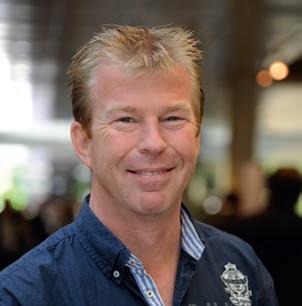
GlobalCONTACT: Which was the best congress for you and why?
Erik Smidt: To be honest, the best congress for me in 2018 was because of a personal issue. As I mentioned earlier, we changed the format of the manufacturers' forum. We were very pleased with the number of participants, which, if I remember correctly, was over 120. The plan to have lively discussions between EFCLIN members, who in other situations would sometimes never speak to each other, was successful. Besides great conversations and great contributions to the members, this was a goal to achieve.
In 2005 I was elected to the board by the EFCLIN members and after two years I was appointed treasurer of EFCLIN, succeeding Henk van Bruggen.
After serving as treasurer for some time, I became president of the association, which was extended for another year, when I should have stepped down as I had been a member of the board for six years. Naturally, I was delighted to have the trust of the members.
In 2016, the Board asked me to moderate the Manufacturers' Forum. Together with Hannes Pfund, we had a lot of fun preparing these forums. When EFCLIN held its first post-Covid live event in 2022, the forum in this format was the last one I moderated. For me, it was an honor and a privilege to moderate it and I always enjoyed it immensely.
GlobalCONTACT: What novelty, innovation or achievement do you remember in this industry?
Erik Smidt: The industry is constantly evolving, right down to new materials and modalities. I still remember the introduction of the first monthly and daily disposable lenses. The introduction
GlobalCONTACT: Which venue did you like best?
Erik Smidt: The venue I enjoyed the most was Vilamoura in 2013, what a great place, and even better, we are having the 50th EFCLIN Congress again in Vilamoura. The organization couldn't have picked a better place for an anniversary.
GlobalCONTACT: Was there a moving moment for you that you would like to share with our readers?
Erik Smidt: In my opinion, EFCLIN is a great community, not only for business, but also for meeting friends. My wife Ingrid and I have made some of our best friends through participating in EFCLIN. Steven and Angela Wheeler, who have been retired for a few years, are still our best friends and we visit them and them us whenever possible. So EFCLIN isn't just great for business reasons. You can make friendships that last for years, even if you are no longer in the industry.
For these reasons, I am delighted to become a member again with my new company, BOX 14 Consultancy, and I hope to meet new and old friends in Vilamoura.”


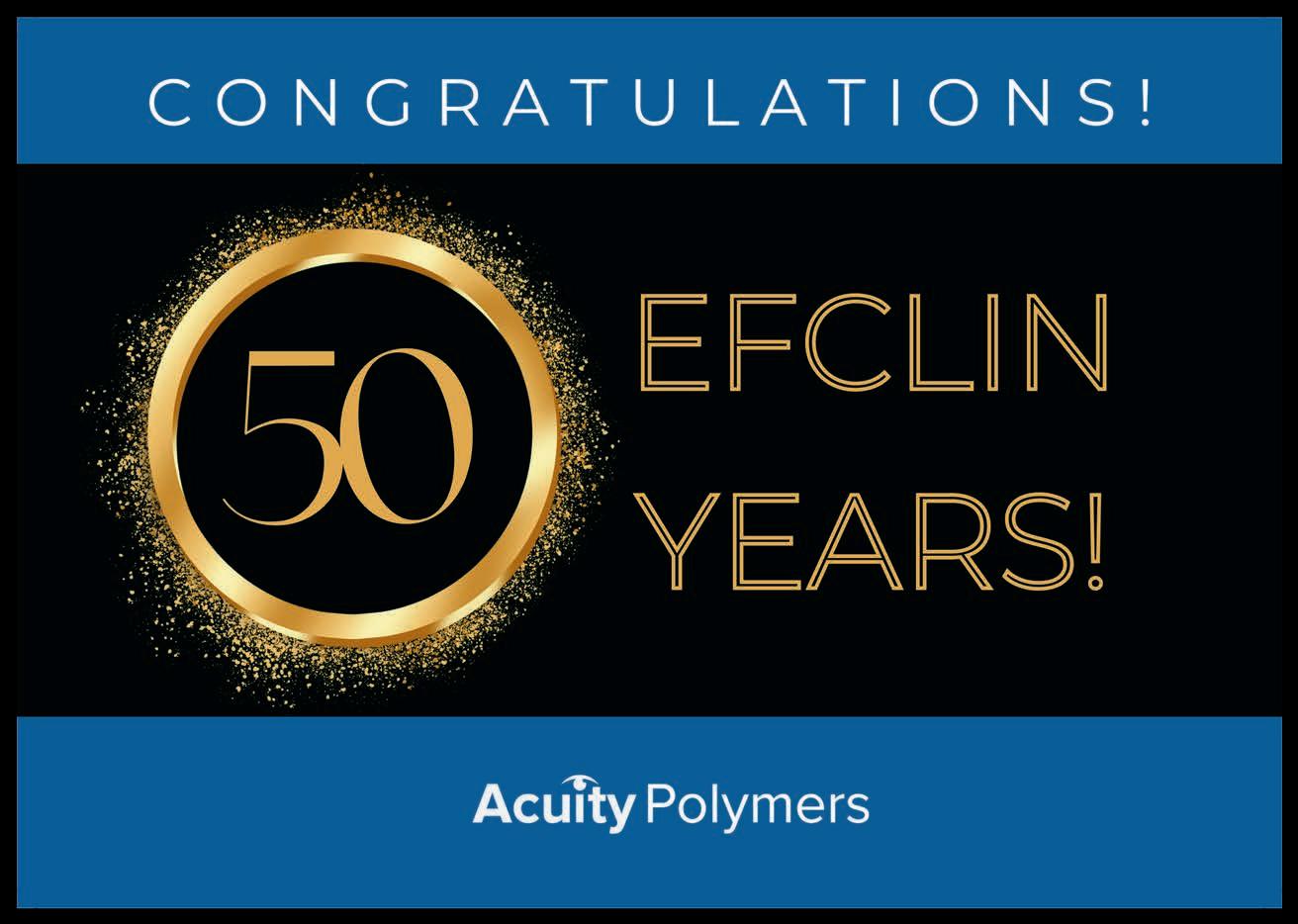

EUROPEAN FEDERATION OF THE CONTACT LENS AND IOL INDUSTRIES SPECIAL TOPIC 20 GlobalCONTACT 1-24


Advertisement SPECIAL TOPIC EUROPEAN FEDERATION OF THE CONTACT LENS AND IOL INDUSTRIES EFCLIN President Duddek Armin 2015 - 2024 Prolens AG Kopito Marcel 2014 - 2015 Bausch & Lomb, Polymer Technology, Germany Smidt Erik 2011 - 2013 Ercon, NL Bear Jeannie 2009 - 2010 Contamac, Menicon Chryssolor Andy 2007 - 2008 Contour Fine Tooling, UK Avery Graham 2005 - 2007 Bausch & Lomb Payne Ken 2000 - 2002 DAC, USA Behar Shimon 1999 - 2000 Soflex, IL Walker David 1995 - 1998 Vista Optics, UK Koller Tony 1992 - 1995 Optik Koller Gfoeller Werner 1990 - 1992 Jaggs Michael 1982 - 1990 Nissel George 1979 - 1982 Cantor&Nissel, UK Gallimore Jack 1972 - 1979 NuSyte, UK Executive Director Aalbers Wim 1991-2010 retired, Belgium Wheeler Steve 2011-2015 retired, UK Beeler-Kaupke Marion 2016 - Comsy, Switzerland
Something else
From 1991 to 2011 we had the pleasure of organizing the EFCLIN congresses. I write 'we' because my wife Kitty, our successive secretaries Paula and Renée formed a close team during that period. When asked by GlobalCONTACT if I wanted to write an article about our experiences in the context of the 50th EFCLIN congress in Portugal, I said ‘yes!’. And it was a great pleasure, too. A pleasure to reminisce with our former team. Memories that you may share with us, but may bring a smile to the younger generation. Yes, boys and girls, that's how it used to be at those congresses. By Wim Aalbers

Let's start in the period when no more congresses were planned. That was in 1992. One or two years earlier there had been another congress in Luxembourg. And back then it was still the case that if you said something at the meeting, you had the chance to immediately get on the board. That happened to me in Luxembourg...
THE ONE WITH THE QUESTION: “CONTINUE WITH EFCLIN OR CANCEL IT?”
In spring 1992 the board decided to have a meeting in Spain. Thenboard member Frances Llapart organized that meeting. EFCLIN had become an “English gentlemen's club” with few activities and that was not what the Board had in mind with this organization. There was only one agenda item: “Continue with EFCLIN or cancel it?” We used the organization's entire (but tiny) remaining cash sources for this meeting. After a few good dinners and great discussions, it was decided that we would give it a try. This was partly due to my offer to try it, but entirely at my own risk. So I (Eurolens, my company) would do everything in my power to get things back on track. And since the till was completely empty, Eurolens would pre-finance it.

A MAGAZINE CALLED GLOBALCONTACT AND A NEW CONGRESS
It was also decided to publish a magazine in the name of EFCLIN: the magazine was called “Global Contact”. The intention was to distribute the magazine among European laboratories and related contact lens organizations. In the same year, 1992, we organized a new congress in Amsterdam.

There was an exhibition with a limited number of exhibitors, but the number of participants was satisfactorily. In any case, enough to continue with another congress next year.
CE MARKING AND MEDICAL DEVICE STATUS
EFCLIN suddenly became more interesting for the industry when the CE marking was announced. Contact lenses were given medical device status and our entire industry was concerned about the consequences this would have.
We organized various meetings for members in several regions. We invited specialists who explained what could be expected. EUROMCONTACT also played an important role as an interest group. As Executive Director of EFCLIN, I was invited to join their board. This meant that EFCLIN was first in terms of information provision. All that turned out to be very useful. This also allowed us to share meaningful and up-to-date information in GlobalCONTACT.
THE ONE WITH THE FIRST MACHINE AT AN EFCLIN CONGRESS
After a while machine manufacturers also became more interested in the exhibition. If I remember correctly, it was DAC International that brought the first machine to an EFCLIN congress. And that didn't happen without a fight...
The exhibition space was one floor higher than the ground floor. (In Europe this is the first floor, elsewhere it may be called the second floor…). Anyway, the machine had to go up in the elevator. And because it was the first time that we had seen a machine like this at the exhibition, we as an organization had not yet 'learned' how to check whether this would be easy to arrange.


EUROPEAN FEDERATION OF THE CONTACT LENS AND IOL INDUSTRIES SPECIAL TOPIC GlobalCONTACT 1-24 22
Photos: Wim Aalbers
WHY JOIN EFCLIN?
“It’s the best form of business networking I have ever done”
“If you can’t support your own industry who can you support?”
“A great source of information”

“Everyone seems to help each other, it’s amazing”
“It’s run by its members, for its members”
“Why wouldn’t you?”
“It’s like having a whole network of experts available at all times”
“There is always someone you can contact who will have experiences you can benefit from”
“I’d pay the membership just to come to the congress”
“The members all understand each other”
“It’s our representative body”
“The congress and exhibition is the best there is”


CONTACT US: INFO@EFCLIN.COM // +041 (0)41 372 1010
EFCLIN OFFERS TWO TYPES OF MEMBERSHIPS: Lens Manufacturers, Wholesalers & Distributors pay an Annual Subscription based upon the number of employees in their organization Suppliers to the Industry and Consultants pay an Annual Subscription based upon the value of their Annual Sales to the lens manufacturing industry 1 2 YOU CAN FIND FULL DETAILS OF ALL THE ANNUAL SUBSCRIPTION CHARGES AT EFCLIN.COM VISIT EFCLIN.COM/BECOME-A-MEMBER Advertisement GlobalCONTACT 1-24 EUROPEAN FEDERATION OF THE CONTACT LENS AND IOL INDUSTRIES SPECIAL TOPIC
The machine was wheeled to the elevator and slid into it. There appeared to be barely 2 cm of space left on each side. We could no longer reach the buttons to operate the elevator. So someone walked up the stairs and 'ordered' the elevator there.
THE ONE WITH JEANNIE AND THE BOAT
From the first congress we organized, we included an entertainment dinner into the program. In Amsterdam it was obvious to organize a dinner on a tour boat. Right from the start, I made it clear to everyone that time was sacred during the congress, but also in all other activities. The program stated that we would leave by boat at half past seven, and so we did – even if people were late. And so it happened. We left and Jeannie Bear wasn't there yet. But Jeannie wouldn't be Jeannie unless she came up with a plan. She ordered a cab and instructed the driver to follow the boat, eventually boarding elsewhere to loud applause. Another entertainment dinner in Amsterdam took us to a fake nightclub: the Eccentric Club, including casino. In that casino you were allowed to cheat. This was immediately put into practice by many participants.
THE ONE WITH THE PUB CRAWL
Between 1994 and 1998 there were congresses in Belgium in Antwerp and Brussels and in the Netherlands in Zeist. For the transport from the airport to the congress hotel, we hired two students. Guests who indicated they wanted this service were picked up. One of this students was my son and he used my wife’s car. So the complete family was involved…
In Antwerp, we organized a pub crawl that ended with a great dinner in a good restaurant. That was quite a task to organize. Nobody was allowed to stay too long in a pub, otherwise people would be late for the restaurant. Fortunately, we had hired a number of guides who led the participants through the pubs with iron discipline.
THE ONES WITH LETTERS TO THE FRENCH AND SAILING TO THE NEW WORLD
At one of these congresses, I was made responsible in the General Assembly for the fact that so few French laboratories were present. I told the members in my best English that we had done everything we could to attract these people. I said: "We even sent French letters!". The English almost fell under the table laughing. While I wondered
It was also during that period that the idea arose to organize a joint congress with the CLMA. We could do that on a cruise ship sailing from Ireland to the USA. The Europeans only had to arrange a return journey and the Americans only had to arrange an inbound journey. However, the machine manufacturers had major objections to these plans, so it never happened. Their argument: “How could we produce a good contact lens at an exhibition on a ship, with wind force eight or more…? Good argument, but a shame, we already had wild plans about possible entertainment.
THE ONE WITH RICK IN NICE
And speaking of entertainment, in 2001 we were in Nice. For the entertainment we hired Rick, an American standup comedian who worked in Amsterdam. We called him in a day early and asked him to talk to the exhibitors. He would then base his act on what he had heard from the exhibitors. He visited the exhibitors with the story that he wanted to set up a contact lens lab in Amsterdam, where he wanted to produce lenses exclusively for artists. Well, such a story naturally provokes quite special reactions. Since Kitty and I were the only ones who knew what would happen the night his act took place, we sat in anticipation when he started. Could our Rick have based an act on what he had heard and seen? He started off fantastically, mentioning names of exhibitors and even products. It was all very funny. Until… Rick lost his lines and fell back on an act he did in nightclubs, with mainly male audience and only after 2 am. Kitty and I were panicking. This couldn't be possible! So I ran on stage and "shortened" his performance and complimented him backstage.
THE ONE WITH THE LIMITED AIR SUPPLY
We also had a very special technical problem in Nice: the number of machines on display had never been so large. At previous congresses, we had adequately regulated the power supply and compressed air, but now there were many more machines. Their exhibitors all wanted visitors to see what beautiful contact lenses these machines could produce. Unfortunately, the amount of compressed air supply was not sufficient. As a result, the exhibitors warned each other when they wanted to give a demonstration. When one machine started, the others had to wait in line. Of course, we also learned

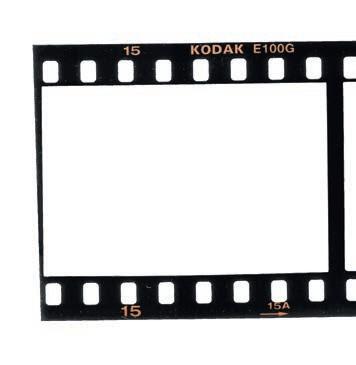

EUROPEAN FEDERATION OF THE CONTACT LENS AND IOL INDUSTRIES SPECIAL TOPIC
>>

Larsen Equipment
In 2004, Keith Parker and I opened Advanced Vision Technologies (AVT). At that time, the economy was going through a very bad recession and as a result, it was impossible for a new business starting up to get a loan. We immediately reached out to Erik and Pam at Larsen Equipment to get refurbished equipment to use in our Laboratory. As AVT’s business grew, we invested in many different pieces of new equipment from Larsen Equipment and this helped us grow into one of the Premiere Labs in the United States. Our success is due in part to Erik and his Team with their state-of-the-art equipment and maintenance of their products. AVT is forever grateful for Larsen Equipment’s support of AVT. It is great to know AVT is working with Industry leaders with the Larsen Equipment and their Team!
Janine Bungo, VicePresident
QUALITY MANAGER: RANDY MINGOY
I have known Erik Larsen since 1992. Since then I have used just about every piece of equipment his company has built. My experience with Erik and the Larsen team has been one of great appreciation as they have always helped me in my needs of fully understanding equipment used to manufacture quality contact lenses. Erik has also been able to engineer any part needed for me even it was a custom part.
Erik (Larsen Equipment) has been and still is a pioneer in the contact lens and optical industry, and I am thankful to him for his support over the years.
Randy Mingoy Quality Manager
Advanced Vision Technologies
DIRECTOR OF OPERATIONS: JORDAN GOBEL
There can be a lot of moving parts when it comes to managing operations, so it is key to have reliable precision equipment that assists in overall efficiency. Larsen Equipment delivers just that! I have been utilizing Larsen manufacturing equipment for over 15+ years and have yet to run into an issue they could not resolve. I am a satisfied owner of bladder polishers, edge roller’s and auto-blockers etc. Each one of these units greatly assists in the reduction of rejects and manufacturing waste. Their ability to customize and retrofit specific tools certainly sets them apart from the competition. Larsen stands behind their equipment with a knowledgeable staff that provides exceptional service. Simply put, we are a better laboratory because of our relationship with the folks at Larsen.
Jordan Gobel
Director of Operations/Consultant
Advanced Vision Technologies
PRESIDENT: KEITH PARKER
I have had the pleasure of working with Erik since the beginning of Larsen Equipment. The first piece of equipment, a 6 spindle horizontal arm polisher revolutionized our production of GP contact lenses. Through the years, I watched his business grow as he and his team listened to our Industry needs and developed now numerous products not only simplifying many tasks of manufacturing but improving the consistency of quality in our finished products. Innovation has been an ongoing experience of our Company only made possible through the innovation of necessary equipment developed and made available by the Larsen team.
Larsen Equipment is a family owned business hosting a team of willing Staff all having the attitude of serving their Customer’s needs. As a Customer, we are made to feel like we have a friend in the business helping us develop a more efficient process allowing our Company to deliver better products for our Customers. Our success of AVT simply could not have been possible without the help, assistance and dedication of Larsen Equipment. I will be forever grateful for my opportunity to work with Erik and his very capable Staff.
Keith

25
Parker President 969 S. Kipling Parkway, Lakewood, CO 80226 Phone: 303-384-1111 888-393-5374 Fax: 303-384-1124 www.AVTLENS.com GlobalCONTACT 1-24 PR-Advert
a lot from this. From the following year we had Henk van de Bogaard present, who took excellent care of the compressed air for many years. From then on, we also organized the transport of all material for the exhibition better than before. Instead of all exhibitors sending everything directly to the congress venue, we had everything sent to a freight forwarder. That carrier brought all the materials in a large truck to the hotel where we were that year. That went well for years with the same carrier, although I was always worried. Suppose that truck had an accident... Then we would have a completely empty exhibition. Fortunately, that never happened.
THE ONE WITH THE BUILT-IN METRO STATION
In 2002 and 2003 we were in Barcelona. Good hotel, excellent facilities and a practical location. The hotel is literally built on top of a metro station. And the metro takes you to the center of Barcelona in a few minutes. The entertainment dinner was in a Flamenco restaurant. In 2003 we introduced the first EFCLIN website during that congress.
THE ONE IN FRONT OF THE AIRPORT
In 2005 we settled in Vienna. The congress hotel was opposite the airport exit, less than a 50 meter-walk. Still, we received several phone calls from congress attendees who had gotten into a taxi and asked us what the address of the hotel was. The entertainment dinner was in some kind of castle with an orchestra playing classical music. Toni Koller, who was on the Board at that time had organized that for us.
THE ONE WITH THE TWO PRESIDENT DINNERS
The congress in 2006 was in Venice. The hotel was built above and around a harbor that was directly connected to the canals in Venice. When we visited the hotel to inspect it, fortunately we now had the experience to check everything for the possibilities of bringing in machines. The proposed exhibition space looked excellent. Large, with a bar and well decorated. When I jumped (my standard check on the condition of the floor...) I bounced up and down. The floor turned out to be made of (thin) wood. Every machine we run there would produce special lenses… Entertainment on a boat in Venice, of course. But...
The number of participants who signed up exceeded expectations. Never before have we had so many participants. On the opening day, our secretary Renee Ong was behind the reception desk. That went well until a bus with about 45 Italians stopped in
front of the hotel. They all turned out to be people who still wanted to register.
So the restaurant where the president's dinner was being held turned out to be too small for the whole group. We had to quickly organize a second dinner at a different location. Kitty led this group and I led the other group. This was the only congress where there were two presidential dinners...
THE ONE WITH THE AUDITION OF STREET MUSICIANS
In 2007, the congress was held in Málaga, Spain. Nice hotel, good facilities. We had planned a Spanish party evening with Spanish music as entertainment. We hadn't been able to book a music group in advance and we thought we could organize it on site. When we arrived in Málaga, it turned out that it was a public holiday in Spain, so all the music groups were fully booked. What should we do? The solution: Kitty and I went to the center of Málaga and looked for street musicians. We listened to them to assess their quality and if they were good enough, to perform at our congress. We signed six musicians who gave a perfect performance on the night itself. A nice side effect was that we stayed well below our budget.
THE ONE WITH THE SHOOTING AND THE PYJAMA PARTY
In 2008 we went to Glasgow. Glasgow City Council has an enthusiastic and inventive urban development department. Two representatives of this department convinced us to choose this city.
Opposite the congress hotel was a pub. A murder had been committed there the night when most of the convention delegates arrived. Perhaps some thought that this was part of our entertainment program, but that was not the case. The entire street was cordoned off by the police and we were only able to enter the hotel with some difficulty. There were also some problems on the first night. In the evening, the hotel had announced (through a note in the rooms) that the water would be turned off from 12:00 am to 2:00 am. Not really a problem, right? But yes, someone had decided to take a bath at 11:55 pm and hadn't read the note. So he opened the tap, but the water supply ended after five minutes. The guest then fell asleep, but at 2:00 am the water was running again. Anyway, around 3:00 in the morning, all the alarms in the hotel went off. Everyone thought it was a fire alarm.
This was the first time that EFCLIN had "spontaneously organized a pyjama party". Everyone in the hotel lobby in nightgowns! Except for a few EFCLIN members who had apparently been sitting in




EUROPEAN FEDERATION OF THE CONTACT LENS AND IOL INDUSTRIES SPECIAL TOPIC

We had booked a typical Scottish restaurant for our entertainment dinner. The haggis was brought in with lots of traditional bagpipe music. The arrival was festive, but haggis was less festive for many attendees. Fortunately, the rest of the food and entertainment was fine. Also in Glasgow: GlobalCONTACT was officially handed over by Kitty and me from Eurolens to Jörg Spangemacher from Mediawelt (which is since 2019 in the hands of Silke and two other shareholders under Eyepress Fachmedien).
THE ONE WITH NO CONGRESS AT ALL
During a board meeting after the congress in Glasgow, the board decided to hold the congress in spring instead of October. The result was that there was no congress in 2009, because that would have been much too soon after the congress in Glasgow.
THE ONE WITH THE INTERFERENCE OF A VOLCANO
The next congress was therefore in 2010 in Riga, Latvia. That location also attracted some criticism in advance. It would still


snow and freeze there in April, there was nothing to do and it was too far away. But it turned out, it was summerly, and everyone enjoyed their stay in Latvia and the old town of Riga.
But leaving Latvia became a bit of a problem for many guests. In Iceland the eruption of the volcano Eyjafjallajökull caused a near standstill of most flight connections and some detours or extra days of stay.
THE ONE THAT WAS OUR LAST AS ORGANIZERS
In 2011 during the congress in Barcelona, Steve Wheeler took over from us, but we remained and will remain interested guests.
Kitty, Renee, Paula and I are convinced that EFCLIN in the future will keep playing the important role which it did in the last half century. Of course, there were ups and downs, but with motivated Board members and the professional Executive Director of the kind we presently have, the future is ours!
Maybe one little advice from this old man: keep things pleasant, make fun, next to the serious business. Make a visit to an EFCLIN congress a party. As long as we do so, we keep coming as visitors and many others will also.

SPECIAL TOPIC EUROPEAN FEDERATION OF THE

A row of auto blockers sits on the large workbench in the middle of the workshop. They are being assembled here and are not yet finished. One by one, the employee responsible for the electronics has to lay various cables and connect them to the electronics. This device is one of Erik Larsen's bestsellers. But his polishers are also known all over the world in contact lens manufacturing. A world map in the workshop marks the places to which his machines are delivered. It contains many pins that testify to the success story of the family business Larsen Equipment Design (LED). In the past there were many, many pins in North America, today there are few.
"In the 1970s, there were once around 500 labs in the USA – today there are only 15," says Erik. What would be a difficulty for other companies, the globally-minded and inventive engineer has turned into a success: today, 90% of his turnover is generated outside North America.
Since his beginnings in 1981, he has been thinking internationally and he soon looked over to Europe and showed his machines at the European EFCLIN conference.
THE BEGINNING: AN ENGINEER THROUGH AND THROUGH
Let's start at the beginning: Erik Larsen was born with a love for mechanical engineering. He was raised in a mechanical environment. He had his first “playground” in the workshop of
The Problem Solver
A visit to Larsen Equipment Design
Together with his son Andrew, Erik Larsen shoulders a steel bar and carries it into his workshop. It smells of oil and metal here. A whole battalion of machinery is installed here. Large, old, new and small. And the really big ones, which easily have a footprint of 6 m² and reach far over the heads of the employees who operate them. Countless boxes of machine parts, screws, cables and the many components needed to build his blockers and polishers and other products are lined up here. We visit Erik Larsen. He opened the door to his workshop in Seattle for GlobalCONTACT and gave us a tour. By Silke Sage
his father, a boat builder on Vashon Island, where he was able to create things and took great pleasure of it. There he learned early on what it took to get things done. Later he graduated at the University of Washington as a mechanical engineer. He initially worked for a few years at a company that manufactured contact lenses as well as its own machines for the emerging contact lens industry. "At one point they got bought out by CooperVision (Medi-Cornea) and stopped producing machines. But I loved making machines, so I quit and started LED about six months later," recalls Erik.
THE LEAP INTO INDEPENDENCE
During his time as an employee, he had already made numerous contacts. He developed a 6-spindle polishing machine and took that to the CLMA congress in 1982. But at first he didn't receive a single order. "There wasn't much money involved and it was just a try – but I knew I could do it," he recalls.
He waited and didn't hold out much hope at first, but the discussions and the presentation of the machine paid off. After around a month, the first order came in. He had obviously been remembered. Even though he hadn't even brought a business card with him, let alone thought of a suitable marketing concept. More orders came in over the next few months. His former boss also ordered six machines. Finally, Bausch+Lomb ordered
28
GlobalCONTACT 1-24 REPORT
a set of machines. But that was just the start, as numerous orders followed. The six-spindle polisher was awarded the first patent for Larsen.
INVENTIVENESS AND PRECISION
At that time there were five companies that also made contact lens machines, so there was competition. After a short time, he got a call from an employee who worked at Wessley Jessen and placed a large order. It was George Glady, who was working there at the time.
"Looking back now, I can say that B+L had provided us with an income, but George Glady turned LED into a thriving business”. Later Wesley Jessen was bought by Ciba Vision, which then became Alcon – and today LED ist still working with Alcon in addition to B&L. George Glady, on the other hand, later founded Euclid Systems and Erik continued to work with him. Sadly, George Glady passed away in the fall of 2023.
THE ROAD TO THE WORLD STAGE
Over the years, Erik Larsen developed a family of polishing machines in various sizes. And in 1990, the lathes were developed to produce ‘freeform optics’. “I was approached to develop a polisher for aspheres and torics. It seemed they needed someone who could solve the problem. So, we did!" he recalls. The “bladder polisher” was awarded a patent. For beta testing, he took his bladder polisher to a small trade show in Las Vegas. He met with Larry Nygren from Custom Craft Lens Services. The reason was that Larry Nygren was using a state-of-the-art lathe from Opto-form at the time. "I wanted to see if the bladder polisher would change the lens instead of just polishing it. It was a good test: we ran about 20 lenses through it and then he started packing them," he recalls. "I said, 'You can't do that, you don't know if they're any good!" He said, "Oh no, they're gorgeous!" He shipped the lenses out of that prototype polishing machine. He said, "This is going to change the industry."
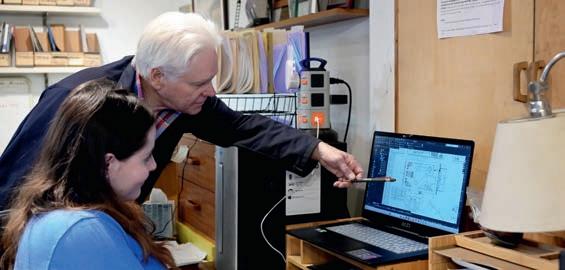




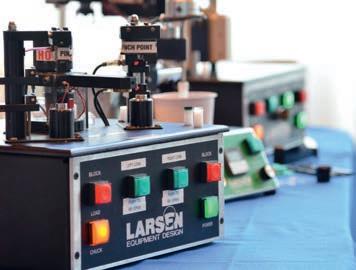

29
1 3 5 6 7 4 2 GlobalCONTACT 1-24 REPORT
1: Erik has long since swapped his drafting board for digital design programs. His daughter-in-law Stephany supports him. 2: Every part is checked. 3: Michael takes care of the large machines. 4: No compromises with the measurements. 5: The electronics are installed by Matt. 6: A picture of his machines at an EFCLIN exhibition. 7: Many of the large machines in his workshop each serve a specific task.




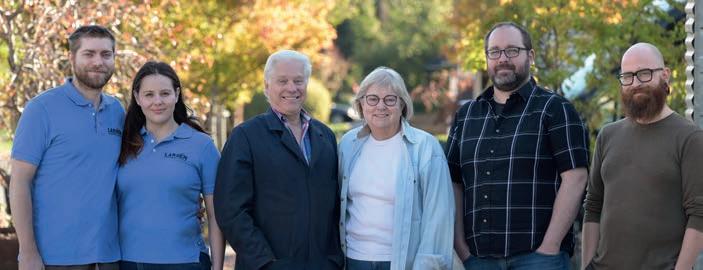
ATTENTION TO DETAIL
A few years earlier, Erik had started publishing articles for Wim Aalbers (the former publisher) in GlobalCONTACT. Always with his perspective of a mechanical engineer in contact lens manufacturing. “Shortly afterwards, my younger brother and I went to an EFCLIN conference in Brussels for the first time and we took our machines with us. But the people were first pretty skeptical about it because they were using different tools", says Erik. "They thought everything had to be converted to our system. So we brought a 6-spindle-machine with 6 different spindles. And the first came and said: 'we can't use that!’ Well, we showed him a tool and said: 'maybe your tool looks like this? We can make it for you then'”. That's when many people realized that Erik adapts his machines to his customers' requirements and not the other way around.
Erik Larsen is his own brand. His machines sell because they are so customizable and easy to integrate into the production process. He didn't achieve his success with a sophisticated marketing plan or fancy presentations. He is an honest soul and simply says what he does. He remembers: "In the mid 1990’s I went with my wife Pam to an EFCLIN Show in Amsterdam
8: Erik shoulders a steel part several meters long together with his son Andrew. 9: Pam Larsen in her office. 10: Erik Larsen shows where his customers are located around the world. 11: Andrew Larsen grew up in the workshop and knows all the operations there.12: The Larsons (center) with Andrew and Stephany Larsen (left) and the two employees Matt and Micheal (right). Not in the picture are two other employees of the company.
and I had to prepare a presentation. I remember I was very nervous to prepare my speech, since I am not the kind of guy who likes to be on stage. So Wim Aalbers, who then also was Executive Director of EFCLIN said: 'Just tell us what you do...' and that got me talking. So after that we picked up the European market really well."
However, not all machines were always a success, "We also had a few flops," he recalls. These setbacks were always an incentive for him not to give up. Different processes with different levels of automation, for example, always require adaptation. We have learned from this and then offer customized solutions.
BUILT TO LAST
Today he offers 6 different models of Blocker, 4 for Contact Lenses and 2 for IOL. Depending on how they make their lenses. "We are the only ones who do that," says Erik. The differences depend on how the specific company manufactures its lenses. “We have to look at that and get an idea of how to solve the process problem. In the last few decades, the main challenge is process, but the industry is maturing to standardization. This is ironic since in contact lens production, each lens is unique. We offer machines
30
8 10 11 12 9 GlobalCONTACT 1-24 REPORT
and processes that are ‘immune’ to the variation in product. Sometimes it takes a whole month of consultation before we fully understand the process and offer an appropriate machine," he adds. "Sometimes people joke: 'Erik, your machines last too long!' That is nice to say but the fact is: good design lasts. They’re supposed to. I know there are some of my polishers that have 50,000 hours on them." However, it is also important for him to mention that there are constant updates for many older machines, which should also be used.
He sees the advantage of his machines as being able to maintain them oneself. "We can train people to take care of it on site," he says. Spare parts are supplied with the machine or can be delivered within a few days. He adds: "It makes a difference if a lab has to call in a factory technician for a repair job for $5,000-10,000 or can do it themselves via video call. It saves time and money. You can also install the device yourself; you don't need a person to come in externally – and that's a very big difference to others.
FAMILY BUSINESS
He has built all of this up together with his wife Pam Larsen. They have been married for 43 years. And she has accompanied and supported him on his visits to CLMA and EFCLIN. Her realm at LED is often behind the desk. In the workshop, a room with windows separates an office. Pam Larsen (CFO) takes phone calls, answers e-mail and has a laugh with the staff. This is also where Erik's drafting board is located, which today looks somewhat deserted. This is because the company has long since switched to creating everything digitally. His daughter-in-law Stephany and his son Andrew also help with this.
The order situation is currently so good that the company is desperately looking for new employees. However, like everywhere else in the world, the shortage of skilled workers is also a problem in Seattle. The 2X increase came during the coronavirus pandemic. He interprets it as follows: "After a drop in orders at the beginning of the pandemic, many companies apparently took advantage of the shutdown, so that they renewed or modernized their production facilities and needed new equipment, which then came a year later – and that benefited us. We saw a huge increase in business from 2020-2021, and it’s still growing."
PROFILE:
1981: Company foundation
1982: First employee
1982: First exhibition at CLMA
1982: First machine sold
1995: First exhibition at EFCLIN
1996: Move into current building
Today: Hundreds of Customers on 6 continents
LED has undoubtedly occupied a niche with his devices. We want to know if they have never been copied? "Yes, I know of a few occasions." he says. "And although some of the maschines were copied, yet they didn't perform particularly well and needed to be rebuilt in a few months."
One manufacturer had bought one device and then made several copies. When Erik visited him, he asked him: "Are you in the machinery business or the lens business?" "Well," he said, he was in the lens business. Erik replied: "The machines you copied are 25 years old. Are you interested in state-of-the-art machines?" He regards his customers as partners. Partnerships come with advantages such as access to new products and technologies. “We grow together.”
In the end, he reordered their machines from Erik Larsen. In most cases, this didn't really turn out to be a disadvantage for LED, because in the end the orders did reach him.
THE FUTURE
Automation has been playing an increasingly important role for some time now. This presents many companies with a number of hurdles. "I've already seen a lot of changes. The lens designs and manufacturing possibilities are fantastic today!" he reports. "Although the push to automation is still not an easy thing to do. The big hurdle is: once you get it installed, who is going to maintain it? When you drop a lens, you pick it up, but if a robot drops it, it doesn't know what to do. So there needs to be an advancement in technology."
Adding to the earlier partnership comment, product development does not operate in a void: “We get most of our ideas from customers that need a solution to a process problem. It’s a collaborative effort.”
He adds: “The fact is that after University, there were many opportunities in the Seattle area. But I chose to go out on my own. We created a culture of product/process development, reliable products, customer service, and innovation. Even when I cut back to a few days or a week, the team is in place to grow the company. Our customers expect great things from us. With our core team in place we are in good shape," says Erik happily. His 35-year-old son Andrew wears a few hats including building blockers, purchasing, and shipping. Together with a wellcoordinated team, they have been working together for years.
As of this publishing, they addes two more empoyees who are working out well.
When Erik Larsen stands among all the machines in his work coat in his tool shop, he is very aware that they are making a major contribution to helping millions of people achieve better vision every day with the development and manufacture of his machines. "We are proud to be part of this industry and to work with companies that develop these excellent lens designs and ultimately ensure that it helps people of all ages to see better and certainly changes many people’s lives."
31
GlobalCONTACT 1-24 REPORT

State of the Art(ificial)
Part 2: Understanding Soft Lens Design & Fitting
Celebrating 50 years of EFCLIN, urges us to look back – but also gives us a good opportunity to look forward. Artificial intelligence (AI) is getting a lot of attention lately, almost to the point of becoming a fashion statement: everybody is into artificial intelligence, it seems. Several recent articles, including one by Hood et1 al and Huang et al2 in leading journals in our field show that big data and AI will become important within the field of eyecare too. This article looked at using optical coherence tomography (OCT) images of the retina to create a reference database for glaucoma detection; if you create databases with images of thousands of healthy eyes, it is not too difficult to see what is normal and what is not. The same has been successfully applied to detect diabetic retinopathy and ocular hypertension. It seems that (objective) technology can be better than (subjective) human beings at detecting anomalies. By Eef van der Worp & Bart van der Linden
How about our contact lens industry? Guess what? We are very much underway in the same direction, perhaps without always realising it. Look at myopia management (comparing a myopic kid’s eyes to a database of age-matched controls) or at keratoconus detection (the indices marked in ‘red’ or ‘green’ on the corneal topography map indicate whether a cornea is abnormal or not). But it’s not just with detection; in fitting contact lenses, large databases can also be used to predict outcomes. Maybe not always to allow ‘self-learning’ yet – but that would be the logical next step. Let’s see where we are right now in our industry, a state of the art(ificial) with regard to contact lens fitting. In the first part, we looked at rigid corneal lenses, ortho-k and sclerals; in this article, we will focus solely on soft lens fitting.
ALIGNMENT
How do we best align a large lens made of a soft hydrophilic material with a more rigid surface (the anterior ocular shape)? In part 1, we focused on using microns of height in our contact lens industry to define both the lens and the surface. We can do the same for soft lenses: much of this comes from knowledge we gained in the last decade or so about scleral lens fitting. In a way, fitting a soft lens is like fitting a scleral lens that is made out of a highly flexible material. Many scleral lens trial sets are defined in microns of height, and changes in scleral lens fits are often defined as ‘x’ flatter or steeper in microns, with some using tangent angles. And the amount of vault over the ocular surface (the fluid reservoir thickness) centrally (typically 150-350) and peripherally (20-100) are all marked in microns, and even the
32
GlobalCONTACT 1-24 FITTING BACKGROUND
amount of ‘settling’ is set to about 50-100 microns. So, let’s use microns as the metric for defining the ocular surface shape first (the workbench) and then try to match what the soft contact lens values are (the tools) in sagittal height (CL-SAG, also in microns).
THE SOFT LENS WORKBENCH
The soft lens workbench is obviously quite a bit larger than the corneal and ortho-k lens workbench. Typically, a soft lens is 14.2 mm in diameter on average. One could take that, the average lens diameter, as a reference point; or one could argue that as different lenses have different diameters, and a lens moves on the eye by about 0.2 mm or 0.3 mm (on either side), then the overall area where the soft lens lands on the eye is about 15 mm. This chord has been used traditionally in the past for scleral lens fitting purposes, at least to distinguish between ‘normal eyes’ and out-of-standard eyes as the main reference point. What we can see in the bar graph (figure 1) is that several small-size studies have looked at this – using the horizontal ocular sagittal height (OC-SAG) over a 15 mm chord 3,4,5,6,7,8,9,10,11,12,13,14. What is interesting is that the absolute values among studies do not differ much from a scientific standpoint, especially given that these studies used different technology (anterior segment OCT, Pentacam, profilometry and Medmont corneal topography extrapolation). The mean OC-SAG value is around 3700 microns, and the maximum difference between the highest OC-SAG and the lowest OC-SAG in these 15 studies is no more than 202 microns. Whether that is relevant in practice or not is a different question and is up for discussion.
So, assuming we can measure the anterior ocular surface one way or the other, how can we find a lens that best aligns to that? We know roughly what the average eye looks like (an OC-SAG of around 3700 microns over a horizontal 15 mm chord), and
“IT ALSO MEANS THAT BASE CURVE VALUES ARE RELATIVE TERMS THAT SHOULD NOT BE USED AS ABSOLUTE VALUES IN CONTACT LENS PRACTICE.”
we also know that the standard deviation (marked with whiskers in the graph in figure 1) is about 175 microns typically on average. That means that 68% of eyes would be between the values of roughly 3500 and 3900 microns. These would be our ‘normal eyes,’ and likely, most standard soft lenses would fit on these normal eyes from an alignment point of view. Finding NEMOs (normal eyes measured ocular surfaces) may therefore be one of our most important first goals when fitting soft lenses.
TOOLS
Previous calculations at Pacific University have found that about 68% to 78% of eyes can be fitted based on the known OC-SAG values compared to the CL-SAG values we currently have. That means that roughly 25% of eyes would benefit from an ‘out-of-standard’ lens design. What do we further know about our tools – the current lenses we put on eyes? Studies at Pacific University report the CL-SAG values of a cohort of lenses at 20 °C (room temperature), the temperature that has been set by the ISO standards for lens parameters. More recent studies from Pacific University indicate, though, that a lens shrinks on the eye (diameter and OC-SAG values get smaller) when it goes from room temperature (the blister) to eye temperature

33
Fig. 1: OC-SAG studies over a 15 mm chord in the horizontal meridian (in microns with SD). 3740 3735 3740 3740 3755 3650 3728 3680 3732 3630 3741 3678 3798 3596 3653 3728 3400 3500 3600 3700 3800 3900 U WATERLOO -OCT PACIFIC U -OCT VISIONCARE RESEARCH -OCT RITZMANN -OCT GROENHOF -ESP STORTELDER -ESP HARKNESS -OCT HARKNESS -ESP HARKNESS -MEDMONT U MONTREAL -ESP U MONTREAL -MEDMONT STORTELDER 2 -ESP KERN -CSP DUTTA -MEDMONT ROJAS -ESP ORTIZ -CSP Horizontal OC-SAG 15mm Chord
GlobalCONTACT 1-24 FITTING BACKGROUND


(34 °C).15 The amount is about 3% but varies with material (more effect with high-water-content lenses). But let’s keep it ‘simple’ for now and stick to the 20 °C values that we have.
Looking at the graph showing reusable lenses in figure 2, we see a nice linear increase in CL-SAG values ‘to play with.’ (daily disposable and toric lens graphs are available too. For reusable lenses, these are the tools we have in our toolbox – eg, the total range from flattest (lowest CL-SAG) to deepest (highest CL-SAG) is about 500 microns. What we also see is that some 8.4 mm lenses (Air Optix Night & Day) have lower CL-SAG values compared to some 8.6 mm lenses (Air Optix Aqua). Normally in clinical practice, an 8.6 is considered a flatter lens than an 8.4, but that is not represented by this data. This mostly has to do with the fact that the lens diameter is different of course, but other lenses with the same base curve and diameter can also show major variations in CL-SAG values. This most likely has to do with differences in lens material that cause the lens to
behave in a different manner on the eye. But this also means that base curve values are relative terms that should not be used as absolute values in contact lens practice.
DELTA-SAG
The factor that is unclear now is how much the CL-SAG value needs to be altered compared to the OC-SAG to obtain a good lens fit, e.g. how big the ‘gap’ is between the ocular surface and the lens (which is called the delta-SAG). So, the new ‘fitting rule’ could be to take the OC-SAG and then add ‘x’. It is important to note, that this should be done over the chord of the diameter of the lens. If the desired soft lens to be fitted is 14.2 mm in diameter, that should be the default OC-SAG to work with. We assume from previous studies that the lens must be somewhat ‘steeper’ than the ocular surface to create mechanical pressure or ‘grip’ of the lens on the slippery ocular surface (with gravity and eyelid forces present). By how much is difficult to say, as it appears to
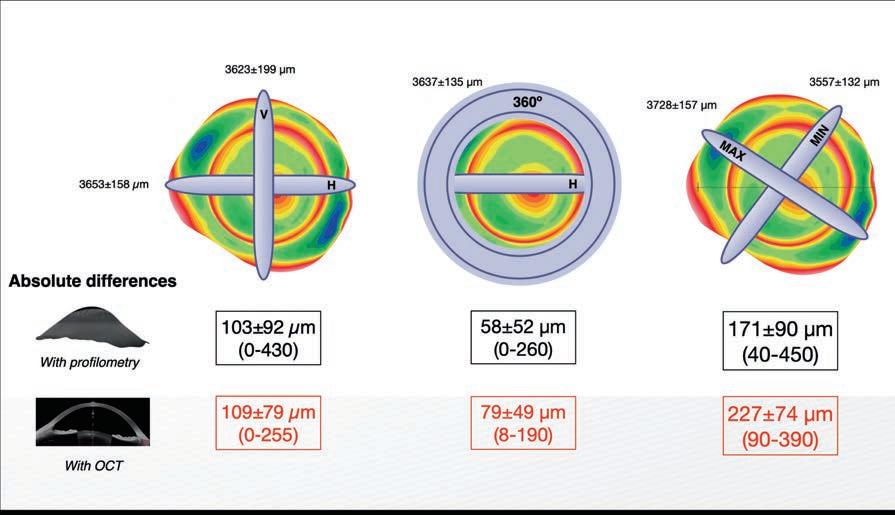

34
3,372 3,434 3,456 3,566 3,586 3,627 3,688 3,691 3,696 3,710 3,812 3,839 3,891 3,100 3,200 3,300 3,400 3,500 3,600 3,700 3,800 3,900 4,000
Lenses Pacific University CL-SAG Data (microns) –Optimec is830 – 20ºC
Reusable
Fig. 2: Range of reusable CL-SAG values measured with the is830 (Optimec) at 20 °C (in microns with SD).
GlobalCONTACT 1-24 FITTING BACKGROUND
Fig. 3: Differences in OC-SAG values measured with the Eaglet Eye ESP and with Visante OCT over a 15 mm chord in different meridians (in microns with SD and range). (images courtesy Javi Rojas)
be dependent on several factors, including soft lens design, lens thickness, manufacturing method, edge lift and material properties such as modulus and water content but also surface treatment, etc. It appears that there is not one delta-SAG value, but it varies per lens and certainly seems to vary with lens manufacturing method (lathe-cut versus moulded lenses). Possibly, the first method (lathe-cut) requires a different delta-SAG value compared to moulded lenses, as a general rule – as the material used for moulded lenses is different from that of lathe-cut lenses, and differences in surface characteristics may be present as well. What also plays a role is that the horizontal OC-SAG value alone is not enough if we want to match this with the CL-SAG directly. Rojas et al. recently showed that if we only measure the horizontal (H) OC-SAG, the absolute differences with the vertical meridian over a 15 mm chord with profilometry and with OCT are, respectively, 103±92 microns and 109±79 microns (see figure 3). If the H OC-SAG is compared to the mean 360° value (all meridians together), the difference is smaller (58±52 microns with profilometry, 79±47 microns with OCT). To complete this story, the maximum difference in any meridian on the ocular surface, for comparison, is 171±90 microns with profilometry and 227±74 microns with OCT. This means we are making a small ‘error’ if we measure one meridian alone; it would be
better to measure the ocular surface in a 360° manner if we want to match the OC-SAG values directly with CL-SAG values. In addition, it would be better to use the 34 °C values (earlier referred to in this article) than the 20 °C values to have the most accurate lens data to match that of the eye.
ONE STEP UP
The next step in the ‘AI’ or ‘big data’ process for soft lenses is to plot the OC-SAG values of normal eyes against the CL-SAG values, as we have done in figure 4. OC-SAG values over a 15 mm chord are presented on the y-axis on the right-side. To match the 15 mm chord data of the eye, the lenses were ‘converted’ from their habitual diameter to 15 mm (using an average tangent angle of the normal eye). The distribution of the ‘normal eye’ Gaussian curve (shown on the top left) is spread out across the graph. When standard commercially available lenses come in two base curves (in the old terminology) and we add them to the graph, assuming that they will cover the ‘normal eye’ data, we can see that most lens types are very similar to each other. The white ovals can presumably represent the clinical application range. In other words: this would be the area where these standard lenses match standard eyes. Outside of this, it is the assumption that specialty lenses are needed; most likely this is the case for Advertisement

FITTING BACKGROUND

Acuvue Vita

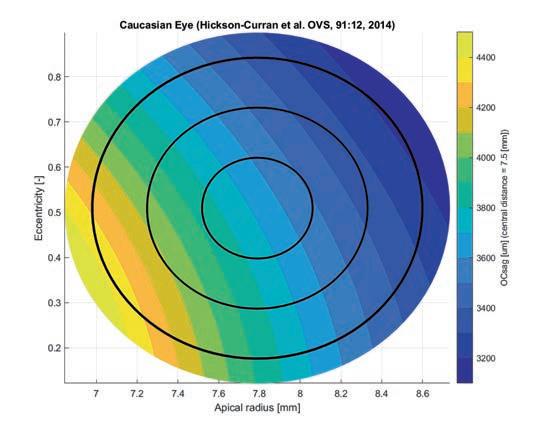
the 27% and 4% zones (respectively more than one and two standard deviations outside the ‘normal.’)
What all this shows, again, is that standard commercially available soft lenses have consistently found their position in the ‘normal range’ arena, covering the ‘top of the bell-curve.’
These may be the first lenses of choice (especially since they can be made in high-volume, cast-moulded and frequentreplacement modalities). But this also means that non-standard eyes require an out-of-standard lens. From the data we have on ocular surface shape (and from scleral lens fitting and design), it appears that adapting a tangent angle approach for the lens to ‘land’ on the ocular surface, and optimizing the lens by both altering the tangent angle and the sagittal height of the lens, would be our best option to create a ‘custom-made’ device that aligns best with the ocular surface – almost mimicking fitting a scleral lens with a soft material. One major issue previously had been that these lenses were limited in both material and replacement frequency.
But now it is possible to make these lenses in silicone hydrogel materials (if desired) and in an up to monthly replaceable modality. Hundreds of back surfaces can be produced to match out-ofstandard eyes. In that sense, the future of a fully customized soft lens is already here for eyes that are out-of-standard.
IN CLOSING
Soft lens fitting is all about the interaction between two surfaces: the posterior side of the lens and the anterior ocular surface. The back side of the lens, which is flexible to some degree, needs to conform to the shape of the ocular surface. It begins with the latter: by defining and ‘finding the normal eye,’ for which standard soft lenses are often the best option. To obtain an optimal outcome with these standard lenses, we speculate that the CL-SAG value has to be somewhat higher than the OC-SAG by an unknown factor that is dependent on lens material and supposedly on
manufacturing method. In fact, currently there are many unknown factors that we need to resolve to come up with a ‘fixed number’ for the delta-SAG. The process of optimizing that is referred to as Finding DORY: 'Depth of Optimized Reservoir Yieldage (in microns).
But if this interaction can be controlled, then we can create the most optimal lens in terms of clinical impact and corneal physiological outcome. A recent study out of The Ohio State University in the US, which will be presented at ARVO in Seattle, shows that lenses that fit ‘tighter,’ defined by having a higher delta-SAG (flatter ocular surfaces with standard soft lenses), show more corneal infiltrative events (CIEs), which are a result of minor corneal inflammation. The theme of the 2024 ARVO meeting is ‘vision for the future,’ a theme that nicely applies to our contact lens industry and the topic of this article. In addition, better centration and more control over lens flexure on the eye may result in better visual performance of the lens. This is even more so the case for the more challenging or ‘outof-standard’ eyes. Here, out-of-standard or custom-made lenses can make a major difference. In other words, there is much to gain in optimizing soft lens fitting and knowing when to divert from standard lenses in eyes that are on the left and right sides of the bell-curve of normal eyes. It may therefore be time for the revival of soft lens customization, using new terminology and improved fitting techniques, the latest technology and sophisticated software. Truly, (a) vision for the future.
ACKNOWLEDGEMENTS
Special thanks to Mari Fujimoto, Beth Kinoshita, Matthew Lampa, Patrick Caroline from the Pacific University College of Optometry Research Group in Oregon (US) and Ben Coldrick from Optimec Ltd (UK) from the data provided on the CL-SAG values and to Javi Rojas for permission to reshare his work on OC-SAG values in different meridians. n

36
Top bel curve
of population 27% of population 4% of population
Auvue Oasys Proclear AirOptix N&D
68%
GlobalCONTACT 1-24 FITTING BACKGROUND
Fig 4: CL-SAG values of a selection of commercially available lenses with two base curves plotted against OC-SAG values over a 15mm chord (distribution of the ‘normal eye’ Gaussian curve). The white ovals represent the theoretical clinical application range.
References
1 H ood DC, Durbin M, Lee C, Gomide G, La Bruna S, Chaglasian M, Tsamis E. Toward a Real-world Optical Coherence Tomography Reference Database: Optometric Practices as a Source of Healthy Eyes. Optom Vis Sci. 2023 Aug 1;100(8):499-506. doi: 10.1097/OPX.0000000000002049. Epub 2023 Jul 27. PMID: 37499165.
2 Huang AS, Hirabayashi K, Barna L, Parikh D, Pasquale LR. Assessment of a Large Language Model's Responses to Questions and Cases About Glaucoma and Retina Management. JAMA Ophthalmol. 2024 Feb 22:e236917.
3 S orbara L, Maram J, Fonn D, Woods C, Simpson T. Metrics of the normal cornea: anterior segment imaging with the Visante OCT. Clin Exp Optom. 2010; 93:150-6. (n=40).
4 A chong-Coan R, Caroline PJ, Kinoshita B, Copilevitz L, Lampa M, Kojima R, Andre M (2012) How do normal and keratoconic eyes differ in shape? Poster GSLS; January 26-29, Las Vegas, USA. (n=55)..
5 Hall LA, Hunt C, Young G, Wolffsohn J. Factors affecting corneoscleral topography. Invest Ophthalmol Vis Sci. 2013; 54:3691-701. (n=50).
6 R itzmann M, Caroline PJ, Börret R, Korszen E. An analysis of anterior scleral shape and its role in the design and fitting of scleral contact lenses. Cont Lens Anterior Eye. 2018 Apr;41(2):205-213. (n=39).
7 Van der Worp E, Hulscher. Speed Date – CL-SAG meets OC-SAG: part I. Global Contact. 2015; No.68(2), 34-5. (n=86).
8 Van der Worp E. Reaching for the Stars. Global Contact. 2017; No.70(2), 30-2. (n=214).
9 Harkness, Ritzmann, Caroline, Kojima, Hayes. Comparison of Sagittal Height Measurement Methods and Predicting Central Clearance for Scleral Contact Lenses. Master thesis, Pacific University 2015. (n=52).
10 M ichaud L, Tremblay C, Grégoire S, van der Worp E, Wolffsohn J, Mertz C. Relationship between Ocular Sagittal Height and Soft Contact Lens Sagittal Depth to Improve Fitting and Comfort. Poster American Academy Optometry, Chicago - Oct 2017. (n=14).
11 K ern D. Pentacam CSP data., average OC-SAG data between flat and steep meridian. Oculus (Germany). 2018. Data on file. (n=32).
12 D utta D, Amankwah C, Almasyabi J. Aston University Birmingham (UK) study. Medmont OC-SAG H 15mm chord. 2024. Data on file. (n=147).
13 R ojas J, van der Worp E, Piñero D. OC-SAG values in 360 degrees. Poster Global Specialty Lens Symposium 2024, Las Vegas (USA). (n=50).
14 O rtiz-Peregrina, Cruz-Crespo JJ, García-Gamero A, Rodríguez-Farfach F, Bolívar-Parra J, Ghinea R. Changing the paradigm of soft contact lens fitting: a sagittal height-based approach. Stydy at University of Granada, Department of Optics, Faculty of Sciences, Grenada (Spain). Presented at Coopervision Optistudents Awards, Budapest 2023. (n=92).
15 F ujimoto, Van der Worp, Kinoshita, Lampa, Coldrick, Caroline - Variation in daily disposable soft contact lens sagittal depth and other lens parameters at room and on-eye temperature.
16 R ojas, van der Worp, Piñero – To analyze the differences of ocular sagittal height values (OC-SAG) in different meridians and in the 360 degrees. Global Specialty Lens Symposium (poster).
Eef van der Worp, BOptom, PhD, FAAO, FIACLE, FBCLA, FSLS is an educator and researcher. He received his optometry degree from the Hogeschool van Utrecht in the Netherlands (NL) and has served as a head of the contact lens department at the school for over eight years. He received his PhD from the University of Maastricht (NL) in 2008. He is a fellow of the AAO, IACLE, BCLA and the SLS. He is currently adjunct Professor at the University of Montreal University College of Optometry (CA) and adjunct assistant Professor at Pacific University College of Optometry (Oregon, USA). He lectures extensively worldwide and is a guest lecturer at a number of Universities in the US and Europe.


Bart van der Linden, MSc PhD, is managing director / CEO of Menicon, the Netherlands (NL). He received his PhD in biomechanical engineering at the University of Twente (NL). Bart started his career at Menicon (formerly known as NKL) 25 years ago as product and process engineer for the development of made to order contact lenses and the process of manufacturing and the software supported fitting of lenses. He has developed several GP, made-to-order (MTO) soft, and scleral lens designs or under his management, creating a full portfolio of MTO lenses for the Menicon group globally. Since 2012 he is (technical) managing director.

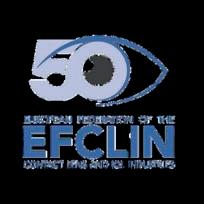
Advertisement STAND 22 April 25 - 27 2024 Vilamoura, Portugal Evolution A NEW PRODUCT GENERATION + Speed + Resolution + Measurement + Modularity + Control optimecsystems.com/efclin is in our DNA ON SHOW AT EFCLIN 2024 FITTING BACKGROUND
Enhancing the comfort
The importance of contact lens characterization
Why do wearers consider "soft" contact lenses (CLs) more comfortable than the "rigid" gas permeable (RGP) alternative? Thus, what does "comfort" mean from a scientific point of view? In this short article, we aim to emphasize the significance of meticulously characterizing and monitoring the physical parameters of CL materials to enhance the comfort during their wear.
By Daniele Costa, Mariafrancesca Cascione, Valeria De Matteis, Maurizio Martino and Giancarlo Montani.
In the present era, rigid gas permeable (RGP) contact lenses (CLs) account for only 10% of the CLs market, which is instead predominantly covered by soft CLs1. The strengths of soft CLs reside in their biocompatibility with the ocular environment, outstanding optical transparency, and hydrophilicity. 2
The hydrophilicity of a CL plays a crucial role in maintaining the pre-lens stability of the tear film, which is essential for proper hydration and lubrication. Instability of tear film, and decreased drainage of protein or lipid often result in inadequate cleansing, immune reaction and heightened friction between the eyelid and CL surface, resulting in irritation and discomfort for the users3
As evident, every physical property of a CL material is interconnected, influencing the overall comfort experienced during wear. A comprehensive physico-chemical characterization of the different materials is paramount to guarantee a comfortable and fully functional product for consumers. Part of the research done in CeRCA Lab, located at the Department of Mathematics and Physics “E. De Giorgi” at the University of Salento (Italy, LE), is on characterization techniques to understand the physico-chemical behaviour both of soft and rigid gas-permeable CLs. The aim of this article is to give an introduction on most used techniques indicated to characterize some of properties of contact lens materials.
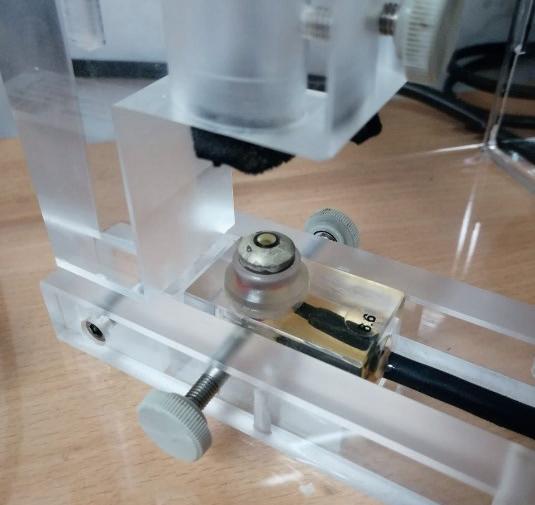
THE CORNEA MUST BREATHE! (OXYGEN PERMEABILITY)
One of the earliest challenges encountered in the development of CL materials is oxygen permeability. This is crucial physical parameter for monitoring the amount of oxygen reaching the cornea through the CL from the surrounding atmosphere. The governing physical law for the diffusion process is the Fick’s law, and oxygen flow through CLs is typically quantified by the product of the diffusion coefficient (D) and the material solubility (k), i.e., Dk-. This value can be quantified by using the coulometric or the polarographic method. In the first one, two chambers filled with oxygen and nitrogen respectively are separated by a CL; the amount of oxygen that can diffuse through the CLs is detected in correspondence with the nitrogen-chamber. In the polarographic method, the CL is positioned on a polarographic cell (Fig. 1); each oxygen atom passing through the lens is detected by an electric current generated through an electrochemical process between two electrodes located on the cell surface. At the CERCA lab, the detection of the oxygen permeability of CLs can be conducted by using a 201T Permeometer, composed of a Rehder SSTS cell and a Polarographic Dk cell from Createch Rehder Development Company.
BETTER IF HYDROPHILIC (WETTABILITY)
When a liquid droplet falls onto a solid surface, it can either spread and wet the surface or maintain a spheric shape in equilibrium. The former behaviour is characteristic of hydrophilic surfaces, while the latter occurs on hydrophobic surfaces. In scientific terms, this phenomenon is referred to as the wettability of a surface and, from the physico-chemical point of view, it involves cohesion forces between liquid-liquid atoms and adhesion forces between solid-liquid atoms. Experimentally, the surface attitude to be wetted by a liquid can be determined by measuring the contact angle (CA), namely, the angle formed between the solid surface and the tangent to the liquid droplet at the three-phase contact point, where air, liquid, and solid phases coexist. In general, a material is considered hydrophilic if CA < 90° (e.g. paper or glass), and hydrophobic if CA > 90°, (e.g. polyethylene terephthalate (TEFLON)), and superhydrophobic if CA > 150° (e.g. lotus leaf). The sessile drop method, involving the deposition of a liquid droplet on the surface of interest to measure the CA through optical images recorded by means of optical tensiometers1, is
38
GlobalCONTACT 1-24 FITTING BACKGROUND
Fig. 1: Polarographic cell used for oxygen permeability evaluation (Dk) of contact lenses (CERCA, University of Salento, Italy). Pictures: CERCA Lab

the most widely used approach to evaluate the CA on a surface (see Fig. 2, left). Conversely, the captive bubble technique is more suitable for evaluating CA in high hydrophilic materials like hydrogels-based CLs. It entails depositing an air bubble on a surface placed upside down under complete immersion in standard liquid (see Fig. 2, right). In this case, the measured angle must be subtracted from the straight angle (180°) to obtain the CA for the surface of interest.
Generally, hydrophilic CLs surfaces facilitate better tear film spreading, leading to effective lubrication during the blinking process. On the other hand, hydrophobic CLs surfaces tend to dry more quickly.
The CeRCA laboratory is equipped with the Theta Lite Optical tensiometer from Biolin Scientific, which is capable of detecting the contact angle and surface free energy.
BLINKING DISCOMFORT (COEFFICIENT OF FRICTION)
The challenge of moving one surface over another is directly associated with friction, a force that resists such movement. The coefficient of friction (CoF) quantifies the difficulty of this movement for the same applied forces: a higher CoF indicates greater difficulty and wear on the involved surfaces. In our case of interest, in ocular environment, the two involved surfaces during a blink are the inner eyelid (in particular the

lid wiper) and the anterior CL surface3. Recent studies have identified high CoF values as a significant factor leading to discomfort in CL users, commonly referred in scientific literature as Contact Lens Discomfort (CLD). Presently, there are no standardized assessments for CL friction, and published values vary over three orders of magnitude (see Fig. 3, left).
The scientific community is still debating whether the analysis should be conducted at high sliding speeds, comparable to those encountered during blinking movements, or at low speeds to establish an upper limit in friction values specific to a particular CL.
The CeRCA laboratory is equipped with a NTR3 Nanotribometer from Anton Paar (see Fig. 3, right), an instrument that enables the measurement of CoF at extremely low sliding speeds (on the order of 100µm/s) in both air and liquid conditions.
ROLE OF NANOMETRIC FEATURE ON THE CL SURFACE
What is the structure of a CL at the nanometric scale? What kind of implication does it have on discomfort?
Advancements in CLs materials remain a crucial focus, as the effectiveness and comfort of this devices are inherently related to surface structure of the material used. The roughness parameter plays a key role, in fact a smooth surface is imperative for the

39
Fig. 2: Optical tensiometer (left) (CERCA, University of Salento, Italy) and image analysis in a captive bubble measurement process (right).
GlobalCONTACT 1-24 FITTING BACKGROUND
Fig. 3: Literature data of coefficient of friction (CoF) for several soft contact lens materials range over three orders of magnitude (left) 3; nanotribometer at the CERCA research centre (University of Salento, Italy) (right); sample holder filled with liquid (inset).


optical quality of a contact lens, as minimized scattered light enhances the performance of the optical system. Furthermore, surface roughness must be taken into account, as deposits are more prone to form on imperfections of the lens surface. Studies have demonstrated that higher surface roughness increases the risk of biofilm development on the CL surfaces, and the transfer of bacteria from a CL is influenced by the roughness (and hydrophobicity).
The Atomic Force Microscopy (AFM) consists of a sharp tip (probe) with a radius in the order of nanometers fixed to a free end of an elastic cantilever. When the tip scans the material, the cantilever deflection changes according to Hooke's law in response to Van der Walls potential (that consider the repulsion or adhesion forces between the probe and the material surface). Fine detection performed by a laser beam of the cantilever deflection provides topography and roughness information (see Fig. 4). The CeRCA laboratory is equipped with the XE70 Park AFM (see Fig. 4 right).
ELASTIC OR RIGID? (YOUNG’S MODULUS)
Mechanical analysis of a material involves subjecting a material to stress forces under compression, tension, and shear tests. The elastic behaviour allows scientists to evaluate handling and durability of a CL. Tensile analysis produce a stress/strain curve (see Fig. 5, left), which shows the resistance of a material to a deformation (strain) caused by a force (stress). A useful parameter is the Young’s modulus (Y), slope of the stress/strain curve in the linear region of the diagram. The maximum elongation is another useful parameter extractable from this kind of analysis, showing the maximum stress that can be sustained by the device before encountering a breakup5. Moreover, the resistance of a CL under stress changes if it is fully wetted by the tear film or in dry conditions. The mechanical tensiometer installed at the CeRCA laboratory, Univert Test Device from World Precision Instruments, allows to detect the Young’s modulus and perform compression tests in liquid environment, also maintaining temperatures like those in the ocular environment.
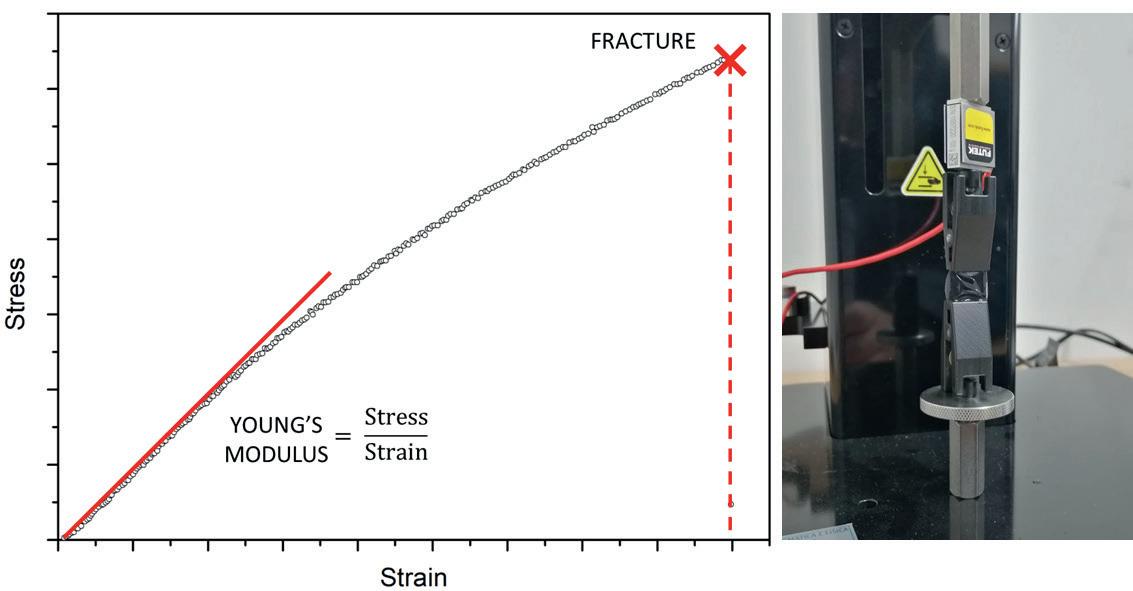

40
Fig. 5: Experimental stress vs strain curve of a contact lens (left); mechanical tensiometer at the CERCA research centre (University of Salento, Italy) (right)
GlobalCONTACT 1-24 FITTING BACKGROUND
Fig. 4: Topography of a contact lens performed by an Atomic Force Microscopy (AFM) at the CERCA laboratory (left); roughness analysis in terms of root mean square (Rq) of the same contact lens (centre) and photo of the XE70 AFM (right).
CONCLUSIONS
Every physico-chemical aspect of contact lens materials plays an important role on contact lens performance. We have highlighted the main subset physical key parameters that prove valuable in the experimental performance evaluation of CLs. A comprehensive understanding can only be achieved by employing different characterization techniques, each of equal significance. This is the mission of our research centre. n
Daniele Costa, PhD student in "physics and nanoscience" at University of Salento (Italy). He got his master’s degree in “nanotechnologies, matter Physics and applicated Physics” at University of Salento in April 2022 cum laude. His doctoral work regards the realization and characterization of bio-nanocomposite polymers and physical characterization of contact lenses.
Valeria De Matteis , Researcher in matter physics and biophysics at the department of mathematics and physics at the University of Salento, Lecce, Italy. Her research interests are: (i) synthesis of plasmonic nanomaterials, (ii) nanotoxicity; (iii) physico-chemical assessment of nanocomposite biomaterials. In addition, she collaborates in experimental activities performed at CERCA.
Maurizio Martino, Full professor of matter physics at the department of mathematics and physics University of Salento Lecce – Italy. He is the coordinator of the degree in optics and optometry at the University of Salento and the director of CERCA. He works on nanotechnology, laser induced nanostructures, radioprotection and optometry.
Mariafrancesca Cascione, Researcher in matter physics and biophysics at the department of mathematics and physics at the University of Salento, Lecce, Italy. Her research interests are: (i) cytomechanics and mechanobiology; (ii) nanocytotoxicity; (iii) physical characterization of nanocomposite biomaterials. In addition, she coordinated the experimental activities performed at CERCA.

Giancarlo Montani has been involved in optometry education since 1988, he has been department head of the contact lens division at the Santa Chiara University Medical Centre in Pisa, Italy, until 2004. In 2007 Professor Giancarlo Montani has cofounded CERCA with Maurizio Martino. Giancarlo Montani also works in private practice. He has published numerous articles in optometric journals and has been invited as lecturer to several national and international optometry congresses. Giancarlo.montani@unisalento.it
The references are available on request from the editorial office.




UPC 100 Vision // UPC nano
Where the highest surface accuracy and quality meets unrivaled productivity.
The compact and fully featured UPC 100 Vision is optimized for highly dynamic diamond turning of specialty contact lenses, IOLs and mold inserts.
Complex freeform Silicone Hydrogel and GP surfaces for OrthoK, Scleral and Keratoconus designs with control for myopia, astigmatism and presbyopia, can be easily produced ‘polish-free’.
The UPC nano is the most economic and compact machine, with on-board freeform capabilities and an optional laser engraver, for manufacturing high-quality specialty contact lenses ready for polishing with minimal lens production costs. It allows highest lens design ranges and best cycle times. Both machines can be easily automated with the SCHNEIDER automation options. Support centres in Europe, Asia, USA and Latin America.

ULTRA-PRECISE AND ECONOMICAL MANUFACTURING OF CONTACT LENSES AND IOL www.schneider-om.com NEW LENS-DESIGN SOFTWARE Available for Standard, Multi- Zones and Meridians Advertisement
CERCA Lab (Advanced contact lens research centre) at the University of Salento, Lecce, Italy
FITTING BACKGROUND

Innovative contact lens cleaning
Smart solution for contact lens wearers

Efficient contact lens care for soft contact lenses is particularly important for long-term and safe contact lens wear. There are various contact lens care products on the market for this purpose. At the last Opti Munich 2024, a start-up presented a completely new system that not only simplifies contact lens care, but also manages the amount of care product used sustainably. An all-in-one care product is used here.
According to Future Market Insights1, the global contact lens cleaning solutions market is expected to grow at a CAGR of 4.3% from 2024 to 2034, reaching US$ 2.78 billion by 2034.
Despite the increasing popularity of contact lenses, many users still face challenges in properly caring for their lenses, such as the risk of infection, the hassle of carrying multiple products and the waste of excess cleaning solution. The intelligent contact lens care system combines two products in one: an innovative lens container and a replaceable liquid cartridge, both connected by a pump mechanism. With this fully automated cleaning
box, users can care for and store their lenses at the touch of a button, making lens care simple, hygienic and stylish.
FROM FRUSTRATION TO INNOVATION: THE ORIGIN STORY
The development of this system was triggered by the personal frustration of one of the founders, Dr. Cornelius Doniga. He was looking for a way to simplify his lens care and avoid the inconvenience of conventional products. He teamed up with his friend and co-founder Peter Bruhn, an expert in marketing and technology. Inspired by the Nespresso model of coffee
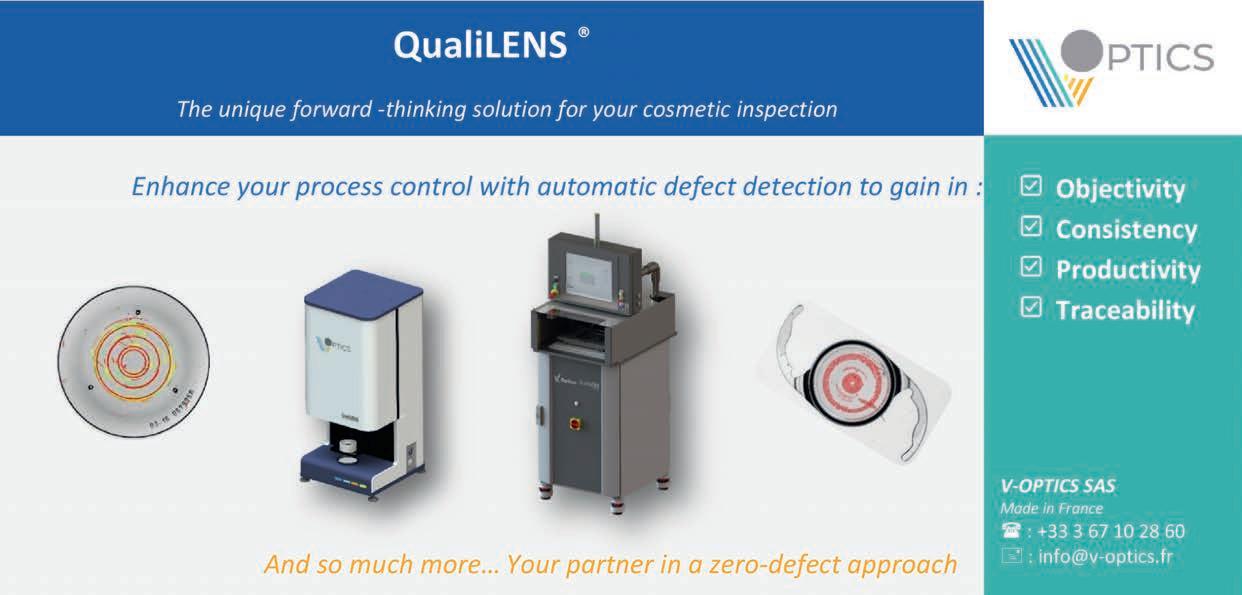

42
GlobalCONTACT 1-24 FITTING BACKGROUND
capsules, together they developed the concept of the Lenzbox. After four years of intensive research and development in collaboration with renowned scientists, ophthalmologists and contact lens manufacturers, the new system was launched on the market as a patented and certified medical product at the end of 2023. It is manufactured entirely in Germany.
CONVENIENCE AT THE TOUCH OF A BUTTON
One of the main advantages of the new system that sets it apart from other lens care products is its convenience. The user only needs one product to clean and store the contact lenses at the touch of a button. The liquid cartridge provides up to 30 uses and can be replaced easily. In addition, the product is compact, making it ideal for traveling and daily use.

REDEFINING HYGIENE AND COMFORT
THE PUMP MECHANISM DISPENSES THE OPTIMAL AMOUNT OF SOLUTION INTO THE LENS CHAMBER, PREVENTING WASTE AND SPILLAGE.
Failure to follow recommended hygiene practices when wearing contact lenses is often considered a significant risk factor for, for example, microbial keratitis and adverse effects associated with contact lenses. According to a study 2 , only 32% of users follow the care instructions properly. As Yee et al. 3 point out, poor hand washing increases the risk of contact lens-associated infection by 4.5 times 4, and up to 50% of contact lens wearers do not wash their hands5. Lenzbox addresses this problem and can tap into this lucrative market by offering a product that improves the user experience, satisfaction and hygiene. For more information, the website is available and updates can be followed via social media. www.lenzbox.com n
References
1 https://www.futuremarketinsights.com/reports/contact-lens-solution-market
2 https://journals.lww.com/claojournal/abstract/2010/11000/ p atient_compliance_during_contact_lens_wear_.4.aspx
3 ht tps://www.sciencedirect.com/science/article/pii/S1367048421000321
4 https://www.sciencedirect.com/science/article/pii/S1367048411001032
5 https://www.sciencedirect.com/science/article/pii/S1367048418308634
The new contact lens care product ensures hygiene and safety for users. For example, the risk of lens contamination and subsequent infection is reduced as the lenses are touched less frequently with the fingers. The pump mechanism dispenses the optimum amount of solution into the lens chamber, preventing waste and spillage. In addition, the closed circuit system prevents dirt and dust from entering the product. This keeps it clean and safe. Advertisement


 Peter Bruhn (l.) and Cornelius Doniga (r.), Photo: Lenzbox
Peter Bruhn (l.) and Cornelius Doniga (r.), Photo: Lenzbox
FITTING BACKGROUND
Comparing bladder polishing systems
– with traditional polishing systems
In lens manufacturing, choosing between a hollow bladder or solid elastic polishing tool can make a difference. This text explores their differences by comparing them to pneumatic versus solid rubber tires. The hollow bladder polisher evenly distributes force, maintaining toric geometry without creating "hard spots", making it superior for polishing complex surfaces. In contrast, the solid rubber polisher tends to remove more material at steep meridians, risking lens rejection. It also requires multiple tools for different base curves and an extra polishing step, increasing error potential. The bladder system, supported by a counter-rotating lens spindle and machine-guided path, polishes all back surface geometries efficiently, requiring only one tool size for various lenses, thus eliminating operator skill as a variable and significantly reducing polishing time. By
Erik Larsen
CONVENTIONAL BASE CURVE POLISHING SYSTEM
I have had lens technicians ask what is better for polishing base curves (BC): hollow bladder or solid elastic polishing tool. Here is an analysis of the two types of polishing tool: First, let’s look at pneumatic tires on cars and solid rubber tires that are typical on warehouse mobile machinery such as forklifts. These are analogous to hollow bladders and solid elastic (rubber) polishing tools.
A tire is inflated with air to a certain pressure, say 30 pounds per square inch (PSI) (2.5 bar). The air pressure (force per area) supports the weight of the vehicle. If the vehicle is 2000 kg, then each tire supports 500 kg. The tire conforms the surface of the road. The force is evenly distributed equally over the contact area. The contact area multiplied by the pressure equals the weight on the tire (500 kg).
A solid rubber tire is elastic. The more you deform the rubber, the higher the force is on the rubber contacting a flat surface. The contact force is zero at the edge of the contact area. It increases to a peak at the center. The deformation of the rubber by the flat surface generates the support. If there is 500 kg of weight on the tire, the force that peaked at the center is averaged over the contact area. For a typical solid rubber tire the peak force is around 70 PSI (5 bar).
BLADDER POLISHING SYSTEM
Assembling the bladder on the mount traps air or water between the mount and the bladder. This causes a slight positive pressure under the bladder. If you are polishing a 7.50 mm radius BC with a 5.50 mm radius bladder, the bladder conforms to the BC achieving a contact area proportional to the internal pressure between the bladder and the polishing tool. The force is constant across the contact area. When you are polishing a toric surface for example, with a 5.50 mm radius bladder, the bladder conforms to the BC. There are no “hard spots” which means the bladder exerts equal polishing action across the entire surface including the peripheral curve(s). You can expect to maintain the toric geometry.
The solid rubber polishing system, however, works differently. Due to the peak force at maximum deformation, the tool tends to remove more material at the steep meridian. This flattens the meridian resulting in an out of specification rejected lens. If you are polishing for example for 20 seconds, you will see a flattening of the steep meridians. If you polish for 5 seconds, probably not. This is an example of why you are better off using the bladder polisher on a toric lens.
You may need ten rubber polishing tools in .5 mm radius increments to polish all your base curves. This requires the lab



44
R(BC) A B GlobalCONTACT 1-24 MANUFACTURING
tech to select the correct tool size to avoid ruining the lens. Also, since the solid rubber polishing tool is spherical, it only polishes the optic zone of the back surface. You need a secondary polishing process to completely polish the back surface out to the edge. This process is an additional step and has potential for operator error.
ADVANTAGES OF THE BLADDER POLISHING SYSTEM
The bladder system polishes any back surface geometry. There are three elements to the bladder polishing system:
1. The conforming bladder.
2. The counter-rotating lens spindle.
3. The machine determines the path that the back surface travels across the bladder.
Element 1 is explained in the article.
Element 2 provides an aggressive polishing action to minimize polish time.
Element 3 provides the support and guidance to the back surface to keep it engaged with the bladder.
The arcing motion of the bladder polishing machine guides the back surface through a flatter radius than the BC so that


▪








the bladder is presented to the entire back surface. There is no need to match the bladder radius to the BC. For example, a typical set up uses a 5.50 mm radius bladder on a nominal 7.50 mm radius BC including free-form geometries. From the action of the machine, the entire back surface is polished. All the lens geometries will be polished by a single bladder during the entire work shift. With this system the outcome is not determined by the skill of the operator.
Polishing times of 5-10 seconds are typical with the bladder polishing system on surfaces turned on a CNC air-bearing lathe. Most of the industry uses this polishing system. A single one spindle machine can polish lenses turned by many lathes at a combined rate of at least 500 lenses per shift. n








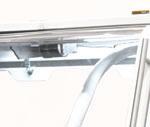

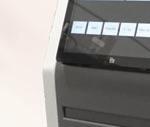



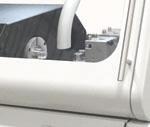






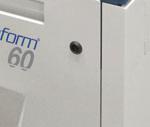










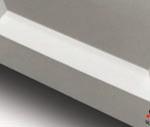














Advertisement
▪ Unmatched performance and reliability
Optomized production with no-polish surfaces capabilities
In-house proprietary design and manufacturing of all critical mechanical components
Erik Larsen graduated from the University of Washington with a mechanical engineering degree in 1981 and started Larsen Equipment Design later that year. Erik Larsen has industry awards from CLMA and EFCLIN.
▪
▪
Evolve into the next generation lenses with today’s FTS-5000 capabilities Optoform 60 with FTS-5000 the ultimate solution www.sterlingint.com · +1 727 538 6110 s cal 000 apabilities www MANUFACTURING

A historic therapeutic contact lens
Series on the Roth Collection
Contact lenses are not only a valuable visual aid, they were also used soon after their invention as a bandage and, following the successful synthesis of water-retaining plastics, as a drug carrier on the eye. Their ability to compensate for irregular corneal astigmatism was recognized as early as the first fitting attempts at the end of the 19th century. Their orthokeratological effect, comparable then to a corsage, was also able to help stop keratoconus or to smooth out a corneal scar. By Hans-Walter Roth
As part of the first, mostly experimental adaptations, the possibility of exerting slight pressure on the cornea while wearing them was discovered towards the end of the 19th century. This could be used to eliminate a superficial defect in the cornea. Even before the first slit lamp or ophthalmometer was constructed, it was known that only a cornea with a central
spherical shape enabled optimum visual acuity, whereas irregular astigmatism led to image distortion.
It was discovered that a glass scleral lens up to 20 mm in size at the time was suitable for smoothing a pathologically deformed corneal surface and thus optimizing visual acuity, but that this effect disappeared again within a few hours when the lens was
46
GlobalCONTACT 1-24 HISTORY
removed from the eye. All so-called orthokeratologic properties proved to be only temporary in the long term. Prolonged lens wear was therefore necessary to achieve the therapeutic effect. This was problematic because the wearing time of the first contact lenses was considerably limited. If they were on the eye for several hours, there was a lack of oxygen in the tear lens. The onset of anaerobic glycolysis led to the accumulation of metabolic end products such as lactic acid in the tear. The consequences were pronounced corneal edema and irritation of the anterior segments of the eye, increased lacrimation, reduced visual acuity and increased sensitivity to glare. The only solution now was either to reduce the size of the lens or to adapt its design more optimally to the corneal surface by means of aspherical inner curves. It was also necessary to optimize the oxygen permeability of the material. However, this required decades of further development.
DRILLING THE PERFECT PERFORATIONS
It was therefore ingenious to simply drill through the lens in order to optimize tear convection. This was difficult to achieve with glass lenses. It was much easier later with the rigid lens material, PMMA. A hard metal drill from dentistry was used to drill through the transition zone of the lenses and deburr the holes. But the diameter of the perforations also had to be right: if they were too small, they became clogged with mucus and cell detritus from the tear fluid; if they were too large, the fit of the lens became unstable and it slipped or even fell off the eye. The 14 mm lens shown here is one such therapeutic lens from the early days of contactology. Its exact date of manufacture is
not certain, but it probably dates from around 1930. A total of three rows of staggered perforations, each with a diameter of 0.3 mm, improved oxygen saturation at the cornea. From 1964 onwards, it was possible to dispense with such perforations in the contact lens, the soft lens plastic allowed an almost unlimited wearing time due to its better oxygen permeability and the now successful reduction in center thickness made the contact lens a suitable bandage. The soft hydrophilic contact lens in particular can now be used as a bandage in the event of a corneal injury. Another property of modern lens resins is their storage behavior, which means that the lenses are also suitable as medication carriers.
Perforated scleral lenses are now only fitted in special cases. The lens shown here is undoubtedly one of the very first contact lenses for therapeutic use. It comes from the practice of a colleague who has passed away in the meantime; he had kept it carefully for many years for possible reuse. n
Dr. Hans-Walter Roth, Ophthalmologist and Director of the Contact Lens Research Institute in Ulm, Germany, is the author of numerous publications and books on the physiology of the contact lens and the history of eyesight. He is a city councilor of the city of Ulm, specializing in education, social affairs, art and culture. He is also the founder of the Ulm Hospital for the Poor.
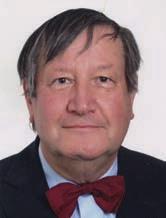





Advertisement www.remvt.com HISTORY

Chat GPT and other AI –a new language for the industry
An interview with CSEM machine learning expert Philipp Schmid
Since the free launch of the ChatGPT chatbot in 2022, artificial intelligence (AI) has undeniably become a hot topic. More than 50% of ChatGPT users reveal that they utilize AI in their personal lives to streamline daily tasks. With such widespread consumer interest in AI, it prompts a natural inquiry into the current role of AI in the industrial landscape. Philipp Schmid, Head of Industry 4.0 and Machine Learning at CSEM, an internationally recognized Swiss technology innovation center, provides insights in the following interview. Schmid addresses, among other topics, the general significance of AI in the industry, the untapped potential of predictive maintenance and why the industry would do well to rethink its handling and attitude toward data. The following interview was first published at netzwoche.ch
48
GlobalCONTACT 1-24 BUSINESS+MARKETING

ChatGPT and other AIs have recently caused a furor in virtually all professions where people write, program or design. How much dust are these supposedly general-purpose AIs stirring up in the industry?
The general-purpose AIs are kicking up an enormous amount of dust. But unlike 2016, this time I am convinced: it will also have a strong direct economic impact in the industry. The situation is comparable to the big AI hype in 2016, when AlphaGo beat South Korean Lee Sedol, one of the world's best professional players, in the board game Go. Go is considered the most complex board game. Suddenly, AI was on everyone's lips and everyone did not want to miss out under any circumstances. However, thanks to ChatGPT, this time AI is not an impressive opponent, but is experienced in a simple way for everyone.
What benefit does ChatGPT bring to the industry?
GPT stands for “generative pretrained transformer”. Generative means something new is created (a matching response in the case of ChatGPT). This property of neural networks has been used in the image domain for a few years now also for industrial applications, be it via AI-assisted image rendering functions or as deepfake to generate training data for improved classification. Transformers are a special architecture of neural networks, which were first introduced back in 2017. Text is comparable to sensor data from a machine: it needs an understanding of the current situation and there is a temporal dependency, similar to the thread of a story. This makes these powerful transformer algorithms suitable for typical industrial problems like predictive maintenance/quality or process optimization.
What has happened in data analytics in the last five years?
These technologies are about extracting insights from data to identify trends and solve problems. It involves all the processes, tools and techniques used for this purpose, including collecting and storing the data. In order to successfully implement data analytics solutions in industry, three critical success factors are needed: annotated data (data that has been manually labeled by experts), algorithms (suitable neural networks) and (affordable) computing power. In all three areas, we have made tremendous progress in the last five years. Thanks to modern machine controllers and powerful databases, it has never been easier to store vast amounts of data. AI-powered annotation tools help human experts with the tedious labeling process. New algorithms like transformers have made it into programmers' standard libraries. And thanks to gamers and crypto miners, GPUs (graphics cards) have become extremely powerful and at the same time attractively priced today. The combination of these three developments means that there is now a large number of industrial applications that were too expensive or not performant enough five years ago.
In your opinion, how well are Swiss companies already digitally positioned?
My daily experience in industry shows a wide spectrum: from simple assembly machines without any sensors to highly integrated fully automatic machines that store millions of data points every day. However, all these data are rarely processed and used. In general, I would give Swiss industry a rather poor report card in the area of digitization.
What is the reason for that?
I attribute a key factor to the restrained pragmatism exhibited by small and medium-sized enterprises (SMEs). While this approach shields companies from unnecessary expenses, it concurrently hinders their ability to assume a pioneering role in technology. Historically, there has been an excessive focus
49
GlobalCONTACT 1-24 BUSINESS+MARKETING
on ROI (return on investment) alone, neglecting the broader array of benefits flanking the path to digitalization. In numerous projects, the most significant value for companies did not arise solely from achieving the initial goal, but rather from capitalizing on incidental outcomes. Presently, however, there is a noticeable surge in companies expressing keen interest, and I firmly believe that it is not too late!
In which areas do you currently see the greatest potential?
I currently see three exciting areas that can also be directly implemented in industry: quality and process control, predictive analytics (maintenance, digital twin, forecasting) and cognitive robotics (intelligent robots, human-robot interaction, awareness of the environment). The selection of appropriate technologies depends on the market segment and the degree of automation. From a technological standpoint, all three pillars are ready for industrial applications; however, the choice of implementation should be evaluated on a caseby-case basis. Initiating the digitization journey promptly is crucial; there is no need to delay any further.
What is holding companies back from realizing this potential?
I think it is a mixture of skepticism, ignorance and risk aversion. Often, at the beginning of an AI project, the resulting performance cannot be guaranteed. The results depend on very many different parameters. Without practical experimentation in a specific case, experts rely on gut instincts. Many managers prefer a clear run-through of use cases to eliminate deployment risks, but in the area of AI solutions, this has hardly been possible to date.
Companies that have relied on the hype too early have also been disappointed in the past; they need to regain confidence and understand that the technological progress of recent years has been tremendous.
It is also enormously important that there is a certain level of expertise within the company. It is like a new “language” and proven concepts from software development have to be adapted. However, more and more young people are bringing this specific know-how with them, and this can also ensure long-term implementation. Companies should dare to take small steps and not be deterred by the big mountain ahead.
There seems to be a trend towards predictive maintenance. Has this trend already arrived in the manufacturing industry? Excluding simple rotating systems (pump, fan, motor), I regret to say that, until today, I have not come across a solution in the industry that truly deserves this name. The algorithms to offer “predictive” exist today. This is proven daily by various text and voice applications like DeepL or ChatGPT. But for machine applications in industry, the data basis is usually missing. We have been looking for an industrial partner for a long time, who would provide us with 1,000 machines, all of which we
would be allowed to break down. This would probably be necessary to acquire the required training data.
I see predictive maintenance as a vision and umbrella term for modern maintenance solutions. Condition-based maintenance is now technically feasible. If this is combined with real-time evaluation and trend analysis, we are very close to predictive maintenance. The local manufacturing industry still has a lot of catching up to do in this field, as we notice from many inquiries. However, establishing a sustainable business model appears to be anything but straightforward.
At CSEM, one of your research topics is predictive quality. What does that mean in concrete terms?
Modern maintenance is all about the availability of the machine. It is seldom possible to prevent component failure; the added value lies primarily in the early detection of a malfunction. Depending on the industry, this can hardly result in a major cost advantage. However, long before a component such as an axle or a motor – fails, the quality gradually declines. The quality of a final product depends on the interaction of the individual production steps and the condition of the components used. In addition, product use and the subsequent field of application must be taken into account.
The concept “predictive quality” tries to predict the quality of a product during production using data-based methods and neural networks. For example, it answers the question: At what degree of vibration of an axis does the machine produce only rejects? It also takes into account whether the product is intended for a highly critical market such as aerospace or medical technology, or whether it is “merely” supplied to the consumer goods market.
I EXPECT GREAT GROWTH IN THIS AREA OVER THE NEXT FEW YEARS.
What are the strengths of predictive quality?
The concept is very comprehensive, and takes into account all production steps, condition of all components and continuously estimates the final quality. It offers a large variety of direct business models and price advantages. A very big plus is that you do not need to destroy 1,000 machines to get the training data. Common quality checks can generate the valuable ground truth data at any time. We have already successfully validated
50
GlobalCONTACT 1-24 BUSINESS+MARKETING
the concept in an industrial use case in concrete production. The implementation is challenging, but it is possible to start with first smaller plants and then expand step by step to the whole production. Many companies are just now discovering the potential of predictive quality and I can literally feel the enthusiasm. I expect great growth in this area over the next few years.
In order, to fully exploit the potential of Machine Learning, data is existential. Is there a general need for better access to data and data sets?
I currently sense a real war in the industry over data sovereignty. Everyone thinks data is the new oil and no one wants to share it. The big added value of data-driven approaches is the fusion of different data sources. The algorithms and computing power are ready to process even large data sets efficiently. Solutions need to be developed here that encourage data sharing and not the opposite. Anyone who shares their data openly and makes it accessible via a suitable interface should also share in any success. Currently, a lot of things are done twice or the party with the greater negotiating power wins. In the whole discussion, a distinction must be made between sensitive, personal data and machine/process data. Especially with health data and personal data, I advocate a very restrictive approach. There has to be a very good balance between the individual benefit and the potential risks. Neural networks in particular offer a whole arsenal of new possibilities for deanonymizing data and further perfidious attack scenarios. Advanced language models, like DarkBERT, exclusively trained on data from the darknet, are already in circulation. As is so often the case, there are two sides to the coin with these new technologies. Legislators should approach this matter with caution and foresight.
How would your solution for regulated access to data look like? Especially for the Swiss/Europe economy, close cooperation in the data domain, even with its competitors, is absolutely essential. However, there's a significant hurdle: it's a “heavily untrusted environment” where mutual trust is lacking, despite the essential need for data from one another. CSEM, together with various companies, has developed a comprehensive concept called DEMON. The central idea is an encrypted data lake in combination with a highly automated crypto key exchange, which manages the access to the data sources as well as the time period. All companies, machines, devices and components can securely store their data in this encrypted data lake and request easily access from other users when necessary.
What opportunities arise from this?
If a manufacturing company wants to implement the concept “predictive quality,” it needs data from all systems in its facility. The supplier of a subsystem, aiming to enhance its products,
requires data only from its system but from all facilities worldwide. In the event of a malfunction in a facility, permissions for the service specialist can be immediately activated, providing temporary full access. It is even possible to make data available for training a neural network without effectively sharing it; the AI service provider receives the trained network without the raw data used. Technically, a lot is possible today, but the question remains: who has the market power and the finances to proclaim such a solution? The benefits would exponentially increase with the number of participants. For now, there seem to be only isolated solutions, and the battle over data sovereignty continues behind the scenes.
What, in your opinion, will distinguish a successful industrial company in ten years?
In addition to the consistent automation of routine tasks, I am convinced that software will play a significantly more important role. An intuitive user interface, condition-based maintenance, encrypted data interfaces and comprehensive quality concepts will become significant unique selling points. Suddenly, the question will no longer be, do I make money with “predictive maintenance”, but rather: can I sell machines at all without it? Mechanical systems and components are becoming increasingly similar, copiers from low-wage countries are catching up with us faster and faster and patents are expiring – differentiation in the future will be determined by comprehensive software solutions. This will have an impact not only on the production and machine level, but also on business analytics . The shortage of skilled workers will force many companies to map the experience of long-serving employees in software and thus make it available as a support system for young, inexperienced employees. Those who consistently follow this path and cooperate with the right partners will see their companies flourish in ten years.

Philipp Schmid is Head of Industry 4.0 & Machine Learning at CSEM. He is responsible for the scientific and economic excellence of this domain. Before joining CSEM he worked in several industrial companies including Roche and spent one year as research fellow at the CSIRO Robotics group in Australia. He has a broad technological background in automation and holds an MBA degree from ETH Zurich. He is member of various expert committees and in 2023, he was again awarded as "Digital Shaper".
51
GlobalCONTACT 1-24 BUSINESS+MARKETING
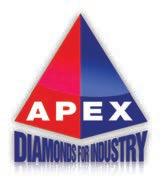
Acuity Polymers Inc. 1667 Lake Avenue
Building 59, Suite 303 Rochester, New York 14615 USA
Phone: +1 585-458-8409 info@acuitypolymers.com
Chris Pantle +1 805 745 1610 cpantle@dac-intl.com Kurtis Brown +1 805 745 1628 kbrown@dac-intl.com

tanja.malkus@bausch.com
susanne.krostitz@bausch.com

K & Y Diamond Ltd. 1801 Boul Saint Regis Dollard-des-Ormeaux (Quebec) Canada H9B 2M9 Phone: +1 514 676 0640 Fax: +1 514 676 0645
Diamond Tools 52 46th EFCLIN CONGRESS EXHIBITION BUSINESS IN THE BEATING EUROPEAN FEDERATION OF THE CONTACT LENS AND IOL INDUSTRIES EFCLIN Winkelbüel 2 CH 6043 Adligenswil Switzerland Phone: +41 41 372 10 10 Fax: +41 41 372 06 83
Association Contamac LTD Carlton House, Shire Hill Saffron Walden Essex CB11 3AU United Kingdom
Contact Lens Material SALES
Lane,
93013
Yellow pages 60_130.indd 1 21.02.24 10:30 PM Machinery &
Module per Year
- 715€
sales@kydiamond.ca www.kydiamond.ca
www.efclin.com info@efclin.com
Phone: +44 1799 514800 sales@contamac.co.uk www.contamac.com
6390 Rose
Carpinteria, CA
USA dac-intl.com
Tools One
550€
please contact sabine@global-cl.com Boston Materials Group Bausch + Lomb Eschelbacher Str. 16 69242 Mühlhausen Germany
Phone: +49 6222 5718308
www.fit-boston.eu Contact Lens Material
Contact Lens Material Contact Lens Handling Products For: Firm Lenses Scleral Lenses Hybrid Lenses Ortho K Lenses Available in Europe from: Prolens AG Josefstrasse 53 CH-8005 Zürich Switzerland +41 44 272 78 18 Zanesville, Ohio USA www.dmvcorp.com ® Contact Lens Handling Products For: Firm Lenses, Soft Lenses, Scleral Lenses, Hybrid Lenses, Ortho K Lenses Available in Europe from: Prolens AG Josefstrasse 53 CH-8005 Zürich Switzerland Phone: +41 44 272 78 18 Manufactured by DMV Corporation Zanesville, Ohio USA www.dmvcorp.com Contact Lens Accessories APEX DIAMOND PRODUCTS LIMITED Unit 10, Bartleet Road, Washford Industrial Estate, Redditch,Worcestershire B98 0DQ United Kingdom
+44(0)1527
Tools
DIAMOND PRODUCTS LIMITED
10, Bartleet Road, Washford Industrial Estate, Redditch, Worcestershire B98 0DQ
+44(0)1527
sales@apexdiamond.co.uk
www.acuitypolymers.com
Phone:
529011 sales@apexdiamond.co.uk www.apexdiamond.co.uk Diamond
APEX
www.apexdiamond.co.uk Unit
Tel:
529011 Email:
all
v1_58007_ADVERT_60MM_X_80MM_APEXDIAMOND.indd 1 12/11/2019 10:18
“Diamonds for
purposes”
GlobalCONTACT 1-24 YELLOW PAGES
“Diamonds for all purposes”
Lambda-X Ophthalmics Avenue Robert Schuman 102 B-1400 Nivelles Belgium
Phone: +32 67 79 40 80
sales-ophthalmics@lambda-x.com www.ophthalmics.lambda-x.com
Instruments

Larsen Equipment Design
1117 N.W. 52nd Street
Seattle, WA 98107 USA
Phone: +1 206 789 5121
Fax: +1 206 789 7756
erik@larsenequipment.com www.larsenequipment.com
Machinery and Tools

SCHNEIDER GmbH & Co. KG
MISUPCOTM
MisupcoTM Inc.
MisupcoTM Inc. 1378 Osceola Avenue Saint Paul, MN 55105 USA
Phone: +1 651 353 8632
Fax: +1 651 698 0719
Phone: +1 702 951-8696
www.misupco.com
mikef@misupco.com
contactmisupco@gmail.com
www.misupco.com
Blocking Wax & Contact Lens Polish
Biegenstrasse 8 –12 35112 Fronhausen Germany
Sterling Ultra Precision Division of AMETEK Precitech Inc. 8600 Somerset Drive, Largo Florida, 33773 USA
SCHNEIDER GmbH & Co. KG
Biegenstrasse 8 –12 35112 Fronhausen Germany
Phone: +1 727 538 6110 fadi.achkouti@ametek.com
Phone: +49 (64 26) 96 96-0
V-Optics SAS 2, rue du travail 67400 Illkirch-Graffenstaden France
Phone: +33 (0) 3 67 10 28 60
Fax: +49 (64 26) 96 96-100 info@schneider-om.com www.schneider-om.com
Phone: +49 (64 26) 96 96-0
Fax: +49 (64 26) 96 96-100 info@schneider-om.com www.schneider-om.com RZ_Yellow_Pages_60x80_4C.indd
Machinery and Tools
Europe: +49 98 3797 8238 andreas.kuchler@ametek.com
www.sterlingint.com
Machinery & Tools
Instruments
info@v-optics.fr
www.v-optics.fr
Eyepress Fachmedien GmbH
Saarner Str. 151 D-45479 Mülheim an der Ruhr
Phone: +49(0)208-306683-00
Fax: +49(0)208-306683-99
www.global-cl.com info@global-cl.com
Media Service
1 23.06.2020 12:37:08
53
GlobalCONTACT 1-24 YELLOW PAGES
CLOSING WORDS
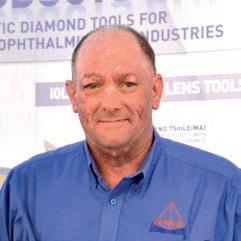

MASTHEAD
GLOBAL CONTACT
The Website and the Magazine: The complete communication system for the contact lens industry. The magazine, 2,500 copies, is distributed to contact lens laboratories, wholesalers and other organizations active in the contact lens and IOL industry.
The website www.g lobal-cl.com is free for all industry related professionals
PUBLISHERS ADDRESS
Eyepress Fachmedien GmbH
Saarner Str. 151, D-45479 Mülheim a. d. Ruhr
Tel.: +49-208-306683-00 Fax: +49-208-306683-99
Website: www.g lobal-cl.com
E-mail: info@ g lobal-cl.com
CEO
Petros Sioutis
E-mail: p.sioutis@eyepress.de
PUBLISHER
Silke Sage, Efstathios Efthimiadis, Petros Sioutis
Name: Steve Cleverley
Position: Managing Director
Company: Apex Diamond Products Limited
If I didn’t do this job, then… I’d be a qualified plumbing and heating engineer.
The best thing about this job is… working with a great team of colleagues and customers.
The last time I was disappointed with my job was… when on the odd occasion a diamond polishing machine breaks down!
I was surprised that… the older we get the harder we seem to work!
For me talking with customers is… the best way to do business, I have made many friends over the years in this Industry.
When we introduce a new product… it’s interesting to hear initial thoughts from customers.
I can see why a product is going to be successful by… the positive feedback and increase in sales.
When I think about those who work for me, I am happy that… we work as a team and are open and honest with each other, everyone who works with me is an important part of Apex.
A day is perfect when… it all goes to plan.
The most insane thing about my job was… I have worked, over the last 29 years, with many members of my family and we didn’t fall out!!
I cannot live without… Tracey.
The best place on earth is… Isle of Wight.
If I had superpowers I would… I would exterminate cancer and stop all of the suffering in the world.
My greatest wish is… After losing my father to be able to spend a day with him again!
In my next life I'll… do the same.
EDITOR-IN-CHIEF
Dipl.-Ing (FH) Silke Sage
E-mail: silke@global-cl.com
TRANSLATIONS
John Saniter, Bopfingen, Germany
EDITORIAL BOARD
Wim Aalbers, Erik Larsen, Eef van der Worp
PRODUCTION & LAYOUT
Efstathios Efthimiadis, Pascal Bruns
DISTRIBUTION
PressUp GmbH, Postbox 70 13 11, D-22013 Hamburg
Tel.: +49-40-386666-308, Fax: +49-40-386666-299
MEDIA CONSULTANT
Constanze Classen
Tel.: +49-208-306683-20
E-mail: constanze@global-cl.com
Sabine Mueller
Tel.: +49-208-306683-21
E-mail: sabine@global-cl.com
ADVERTISING AGENT GREAT CHINA
Beijing FOCUS Optics Culture Commnication Co. Ltd. Room 319, Building 2, Nr. 1, Northbank 1292, Nr. 15 Jianguo Eastroad, Beijing 100024 (Chaoyang), P.R. China
Mrs. Jian Wang
Tel.: +86-10-8537-6529
Email: j enny wan g_f ocus@126.com
Skype: jennywang611
ADVERTISEMENT RATES


GlobalCONTACT 1-24
Price list No. 13, valid from January 01, 2024 Publication Schedule 3 issues 2024: April, July, November SUBSCRIPTION COSTS PER YEAR European Union 80,00 € (plus VAT for German companies), Overseas Seamail 90,00 €, Overseas Airmail 110,00 €, United States Seamail 95,00 €, United States Airmail 125,00 €, Single issue 20,00 € (plus mailing costs) The Publisher requires three months written notice on cancellation. Subscribers please note that proof of notice may be required. BANK DETAILS Bank account: Sparkasse Aachen IBAN: DE21 3905 0000 1073 3925 06 SWIFT: AACS DE 33XXX PRODUCTION & PRINT Kollin Mediengesellschaft mbh, Neudrossenfeld The publisher takes no responsibility for unsolicited manuscripts. Please note also that photographs submitted for use in GlobalCONTACT cannot be returned. The publisher's written permission is required for any reproduction, translation or recording of material published in GlobalCONTACT, including extracts of such material. Permission will normally be given, subject to the usual acknowledgement. Copies made of published items must be limited in number and for personal use only. PHOTO CREDITS P.14: Tuna salmon, P.32: SHOTPRIME STUDIO, P.48: Lance /stock.adobe.com /unsplash.com /istockphoto.com Members of
CLOSING WORDS

Why Choose GlobalCONTACT

VISIT THE NEW WEBSITE YOUR TRUSTED SOURCE IN OPHTHALMIC OPTICS
Global Insight: Stay ahead with our worldwide perspective on industry dynamics and emerging trends.
Expert Analysis: Benefit from in-depth analyses, exclusive interviews, and thought-provoking articles.
Innovation Spotlight: Explore cutting-edge technologies shaping the future of vision care.
Community Hub: Join a global network of professionals passionate about advancing the Contact Lens and IOL industry.
VISIT US ONLINE NOW: WWW.GLOBAL-CL.COM
FT-3: Three Tool Fast Servo for defined edge profiles on all lens designs
Laser: Engraving of alpha-numeric and diagnostic markings
Drill: Diagnostic markings, fenestrations, channels
XLS: Lens Axis Referencing System for non-rotational symmetric and freeform lens designs
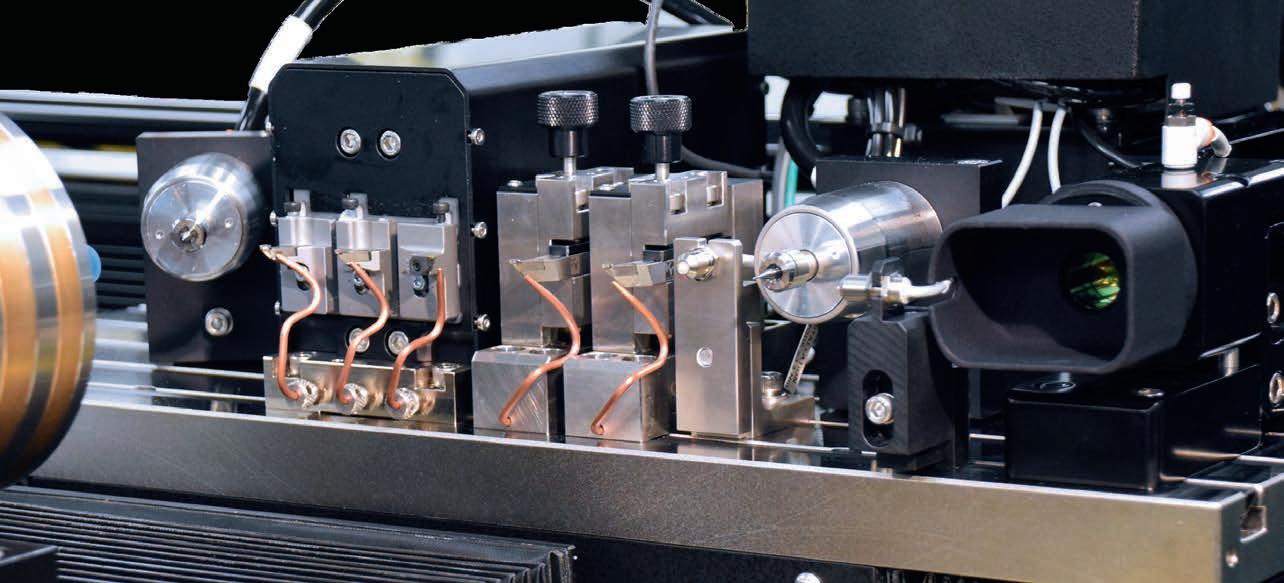
EVERYTHING YOU NEED TO MAKE SPECIALTY CONTACT LENSES
6390 Rose Lane, Carpinteria, CA 93013 USA
+1 805 684 8307
Chris Pantle +1 805 745 1610 cpantle@dac-intl.com Kurtis Brown +1 805 745 1628 kbrown@dac-intl.com
Phone
dac-intl.com































































































































































































